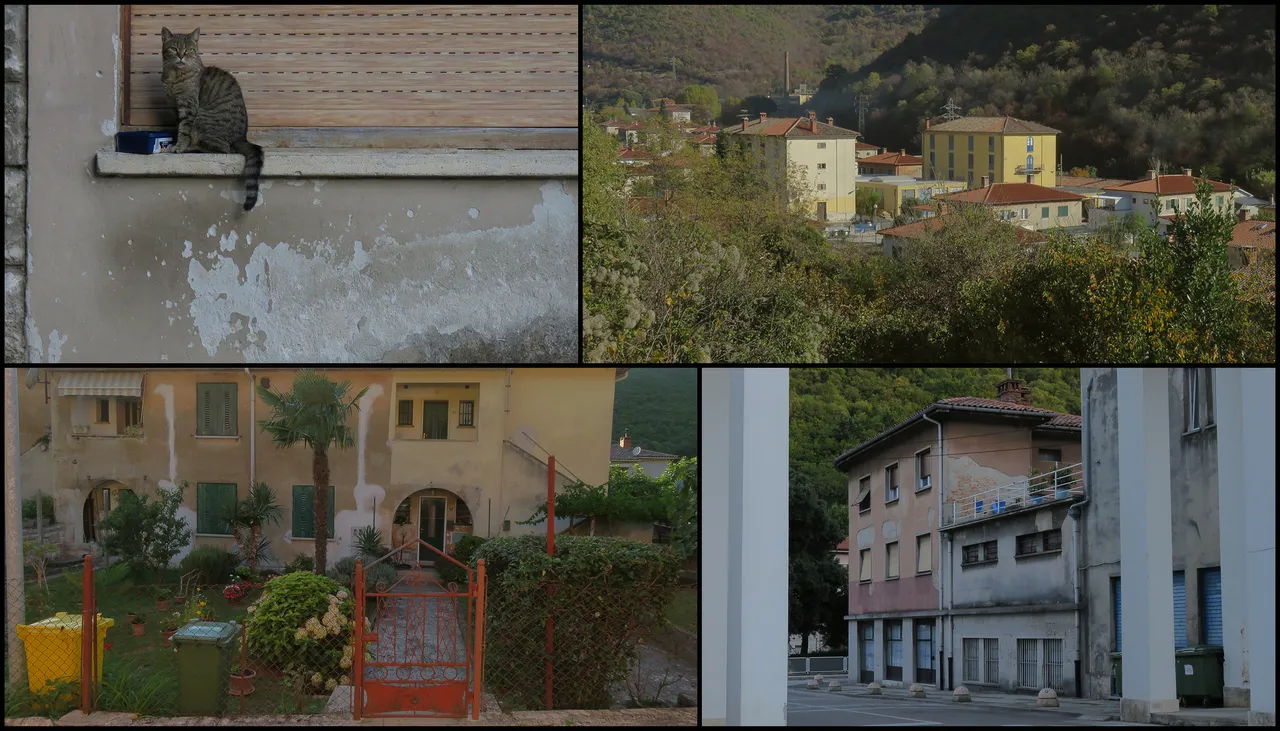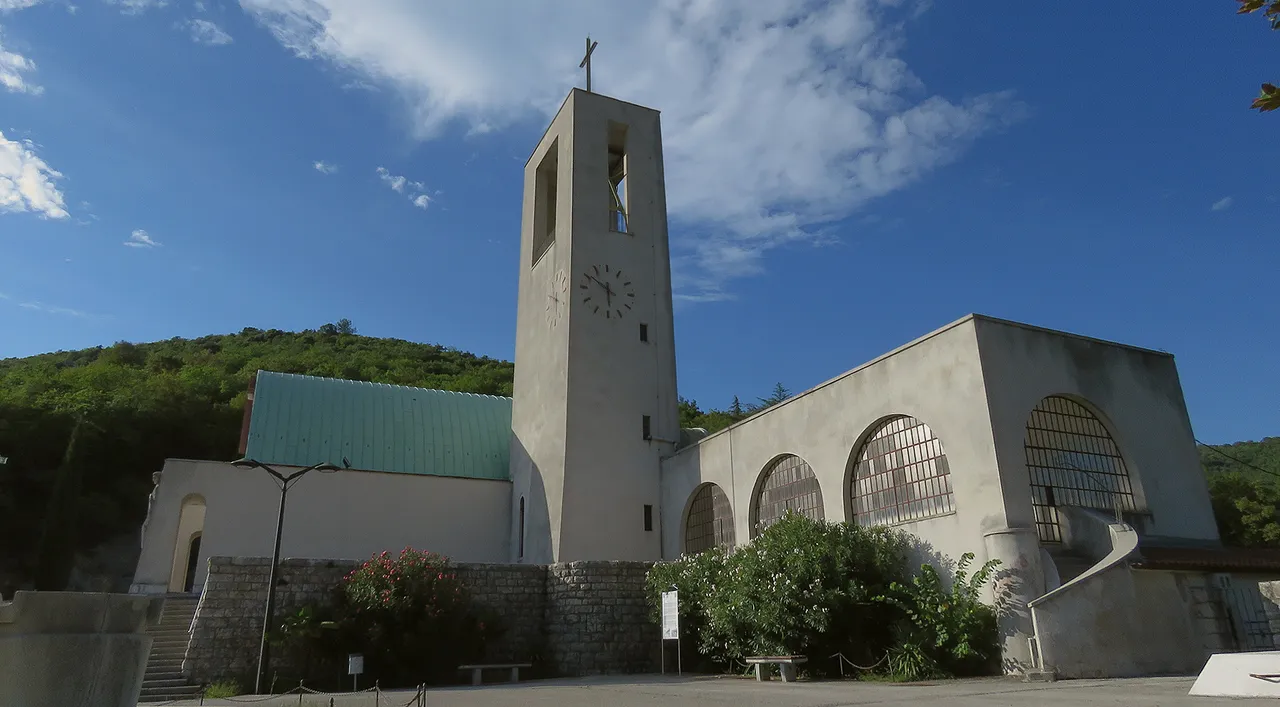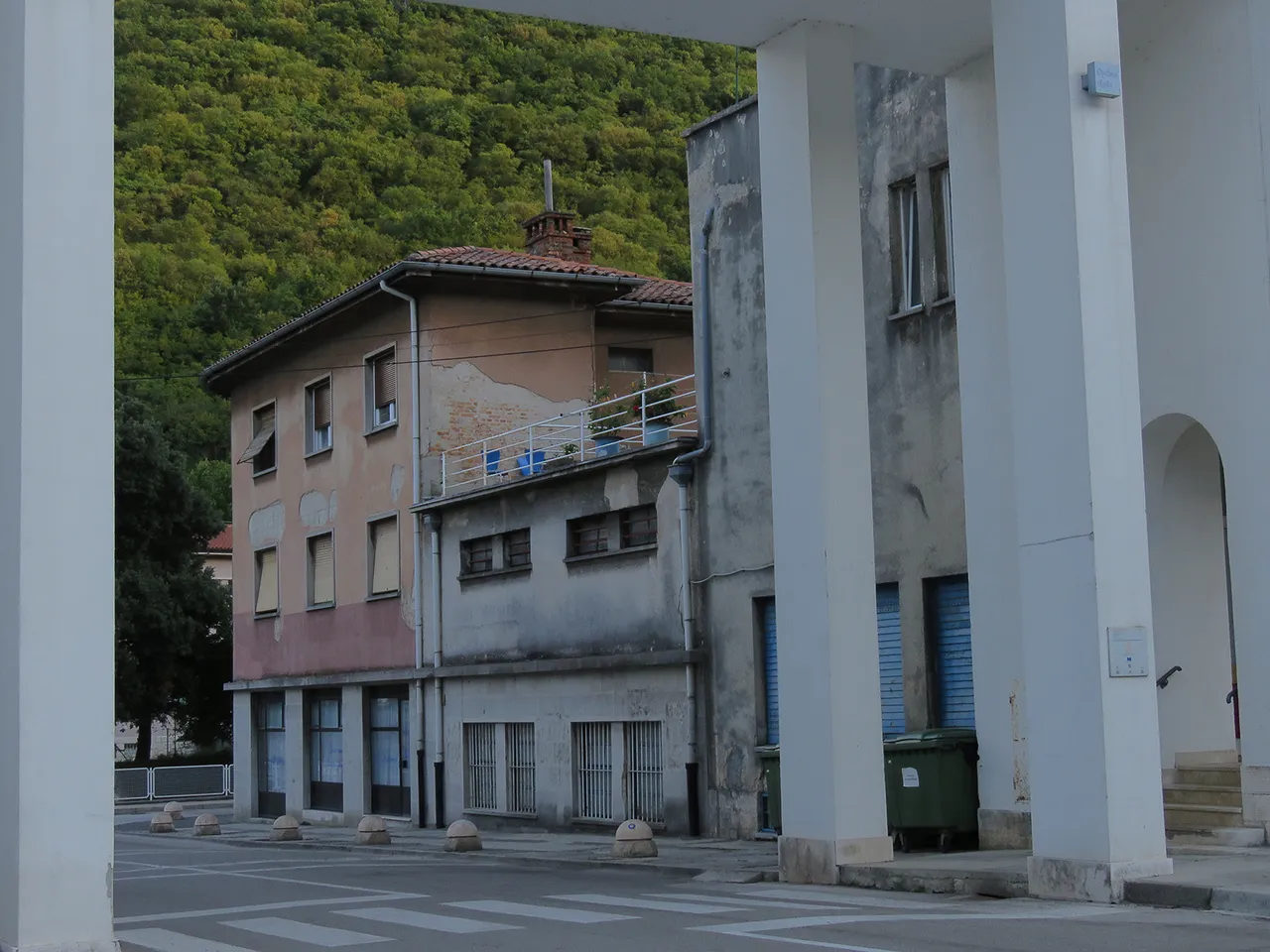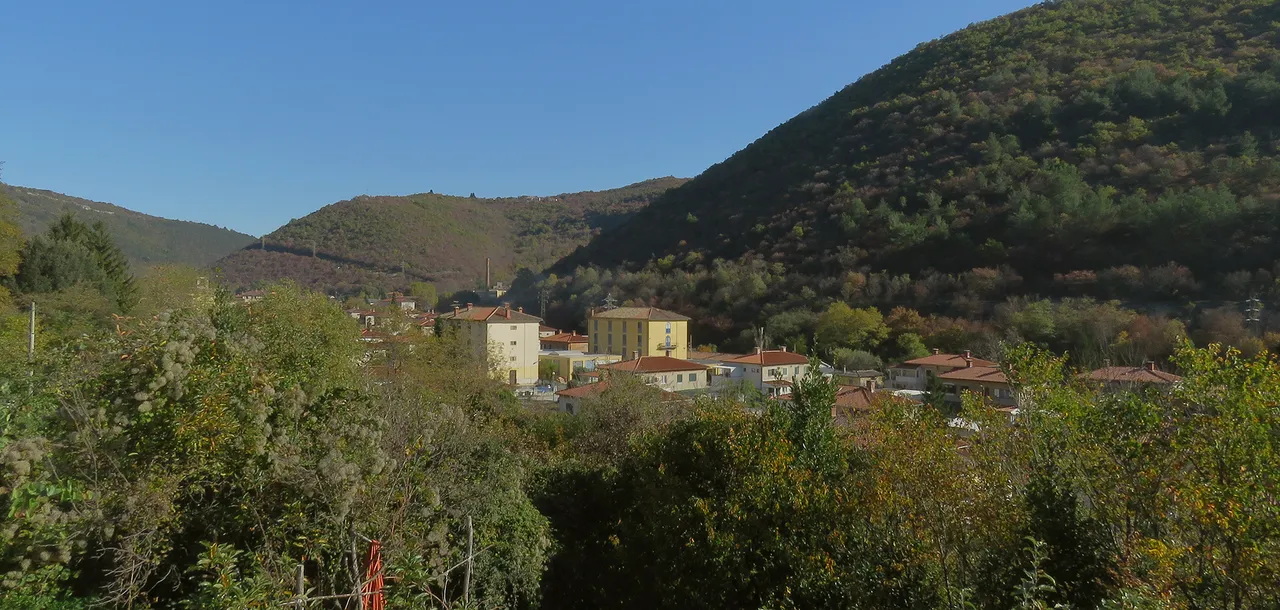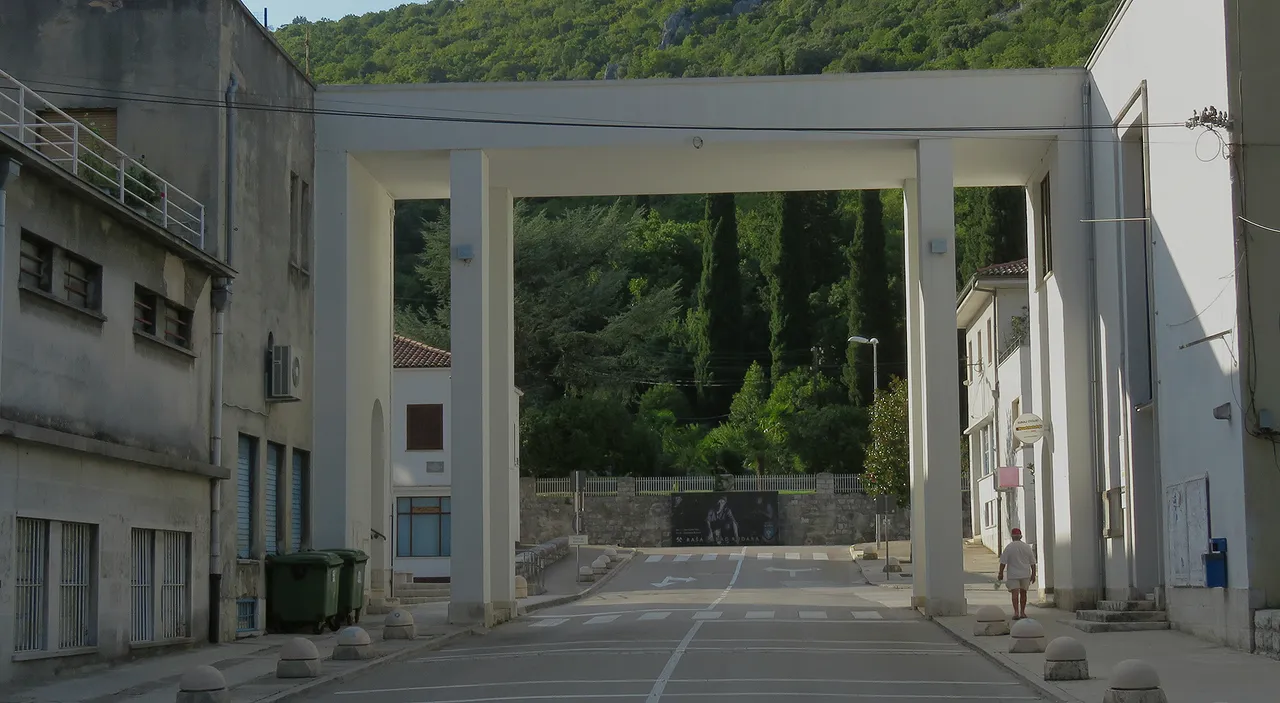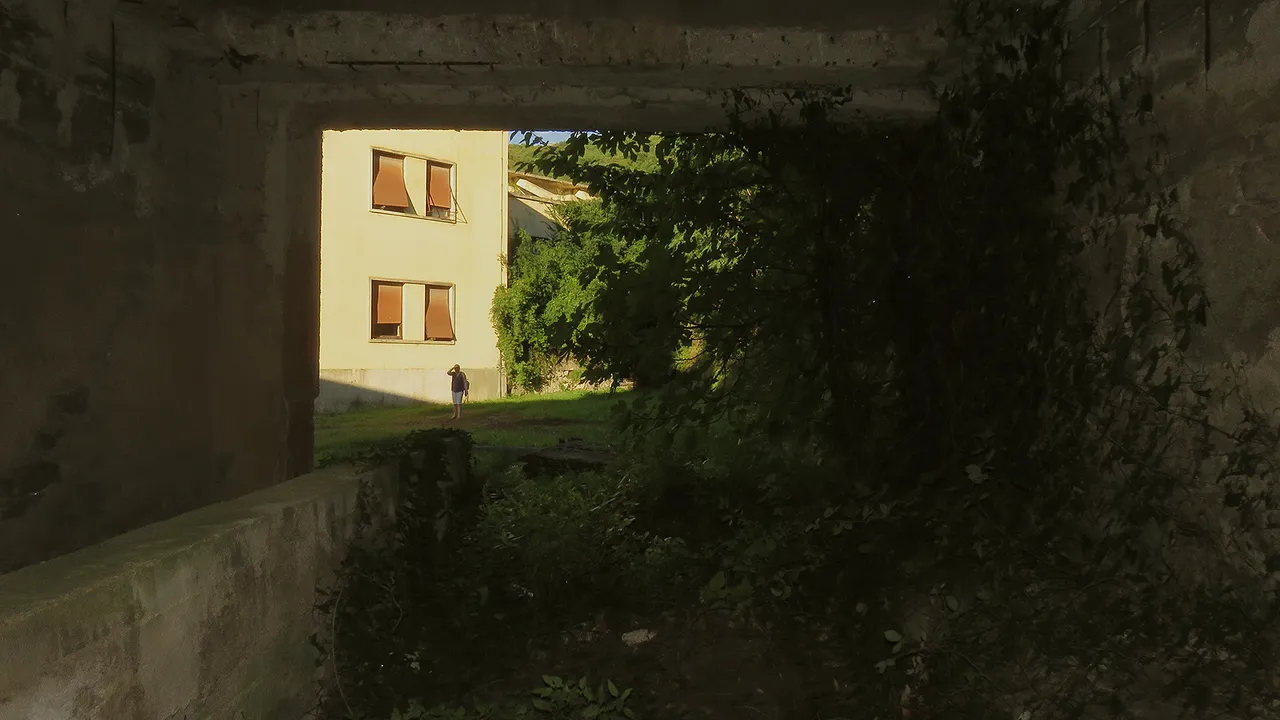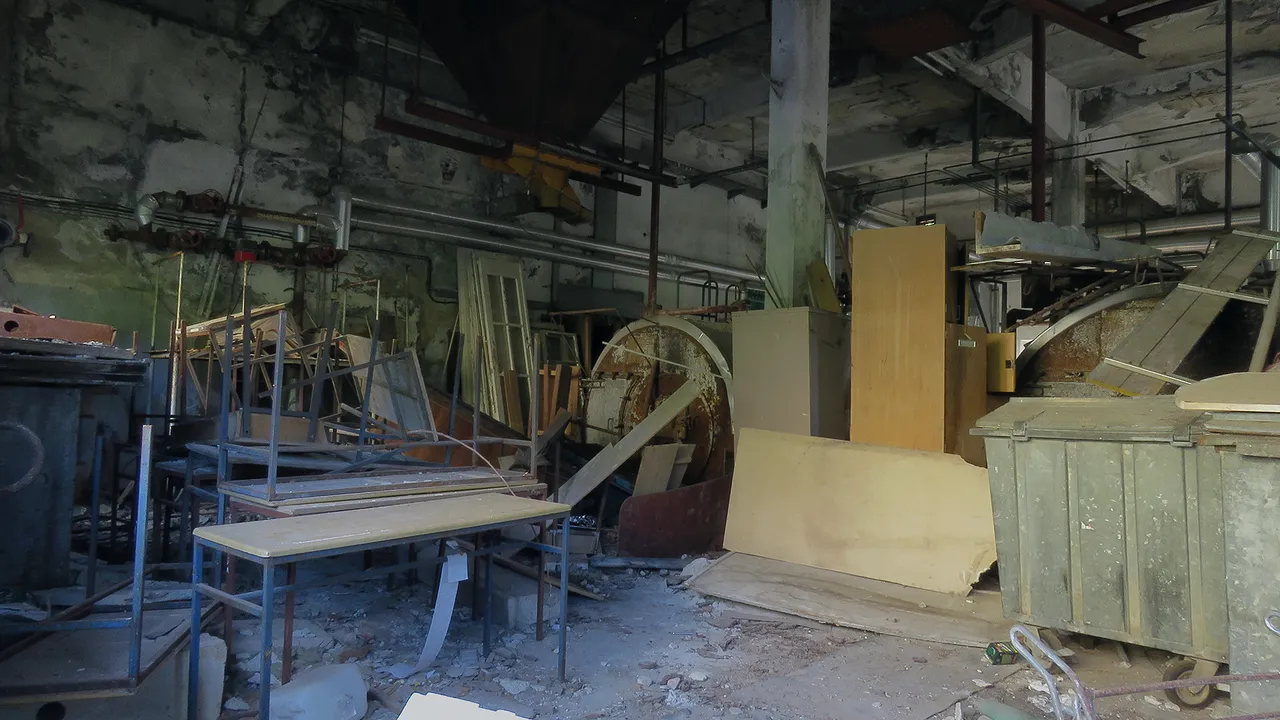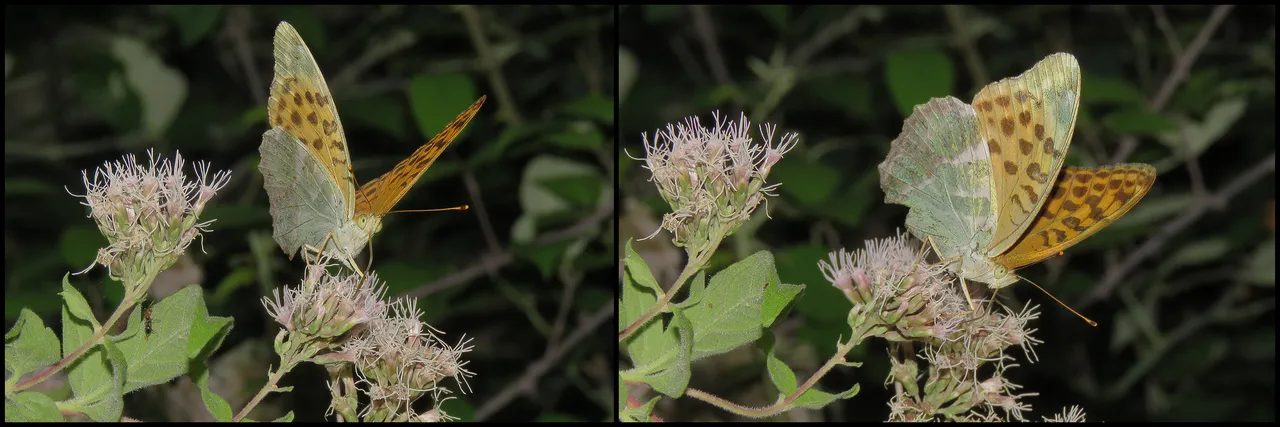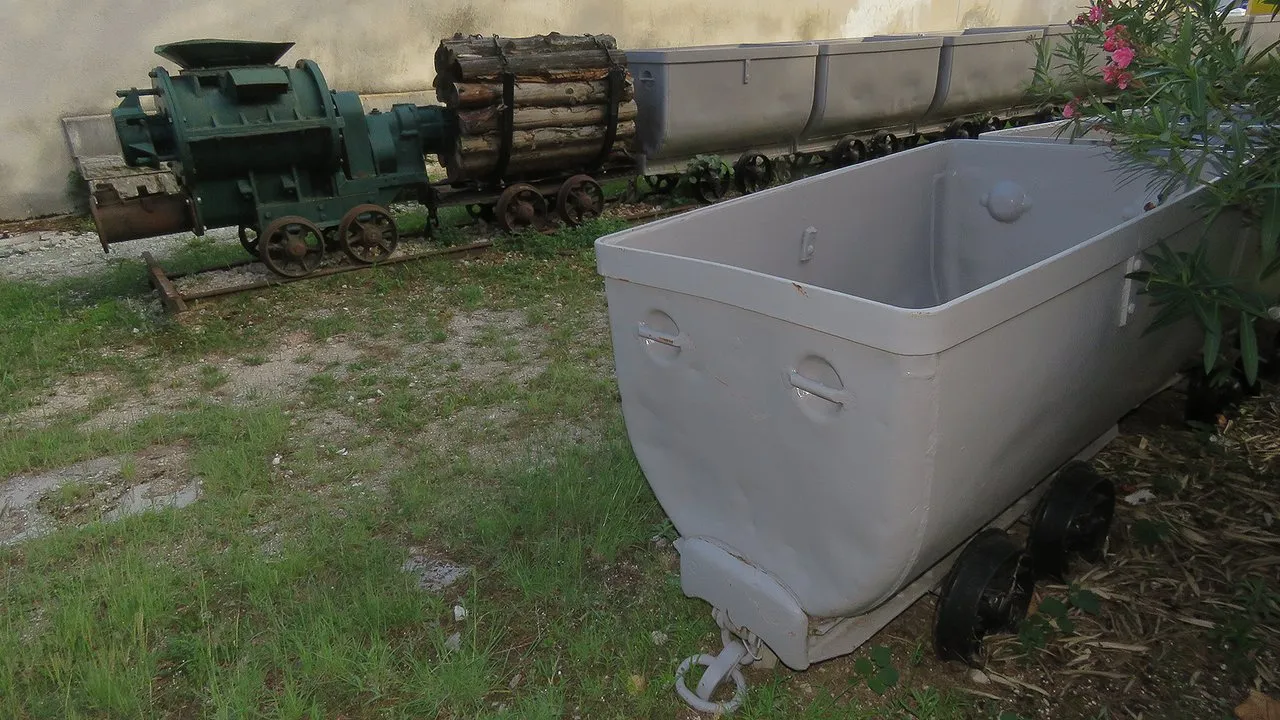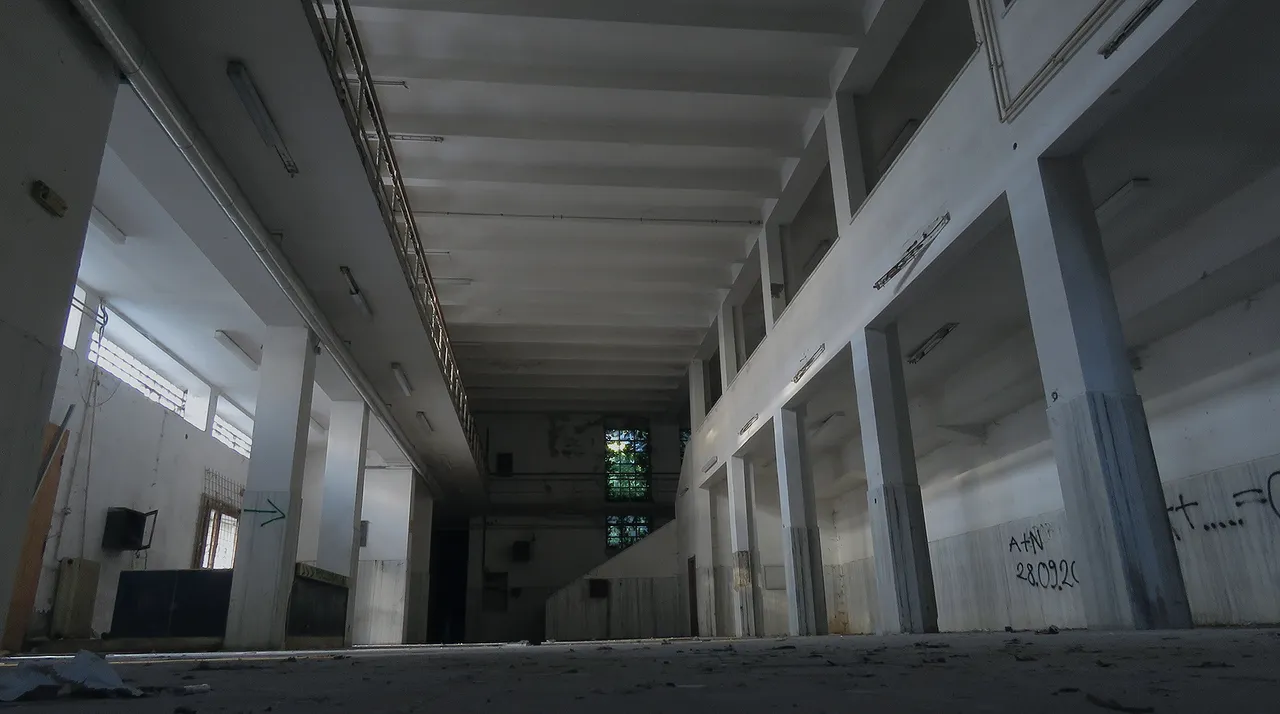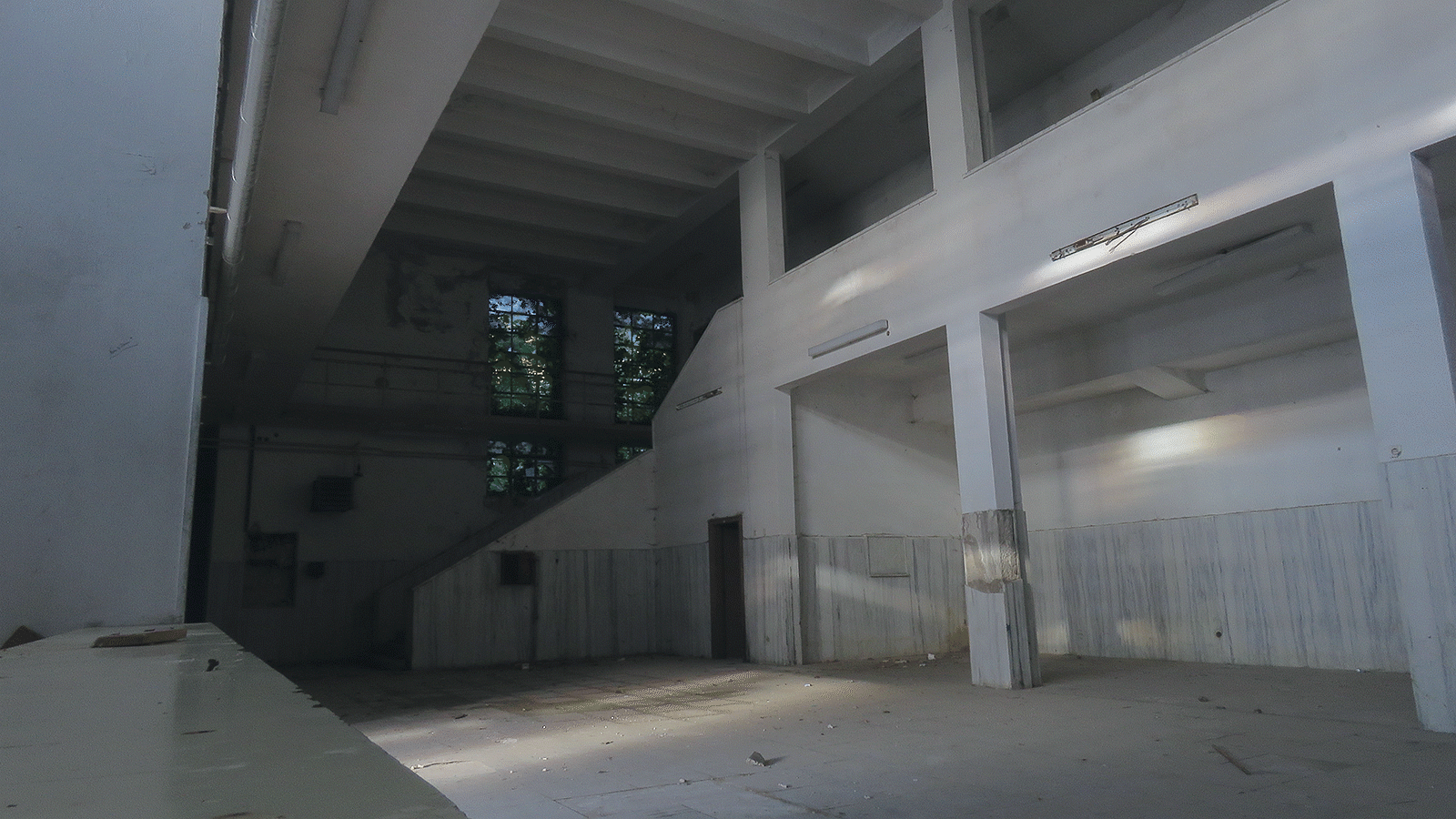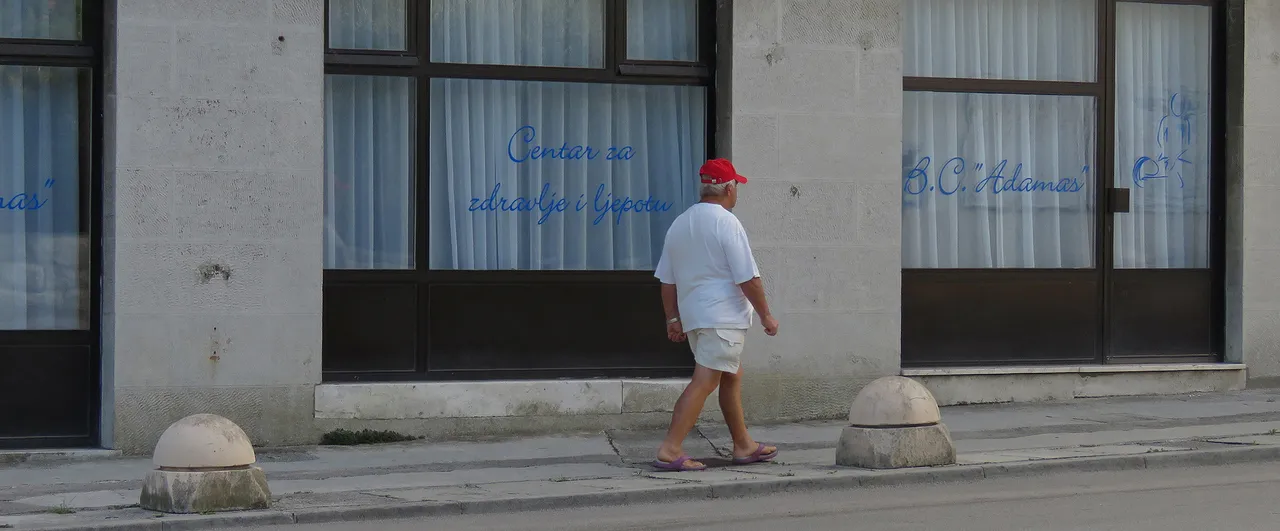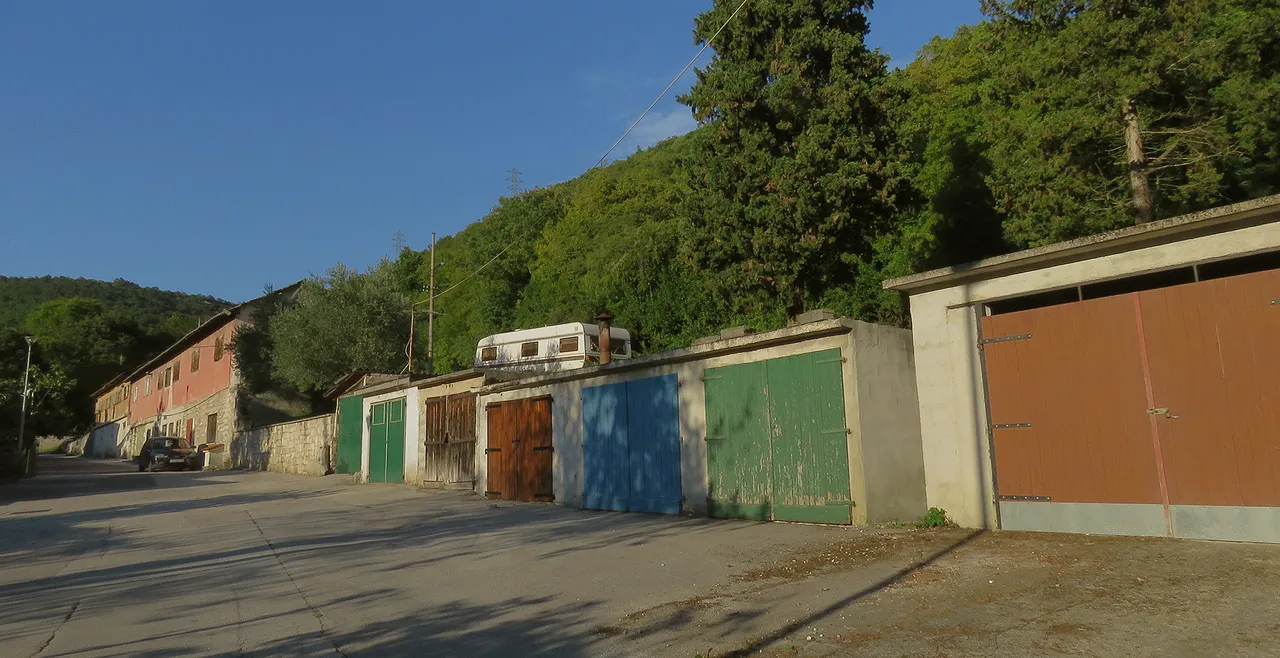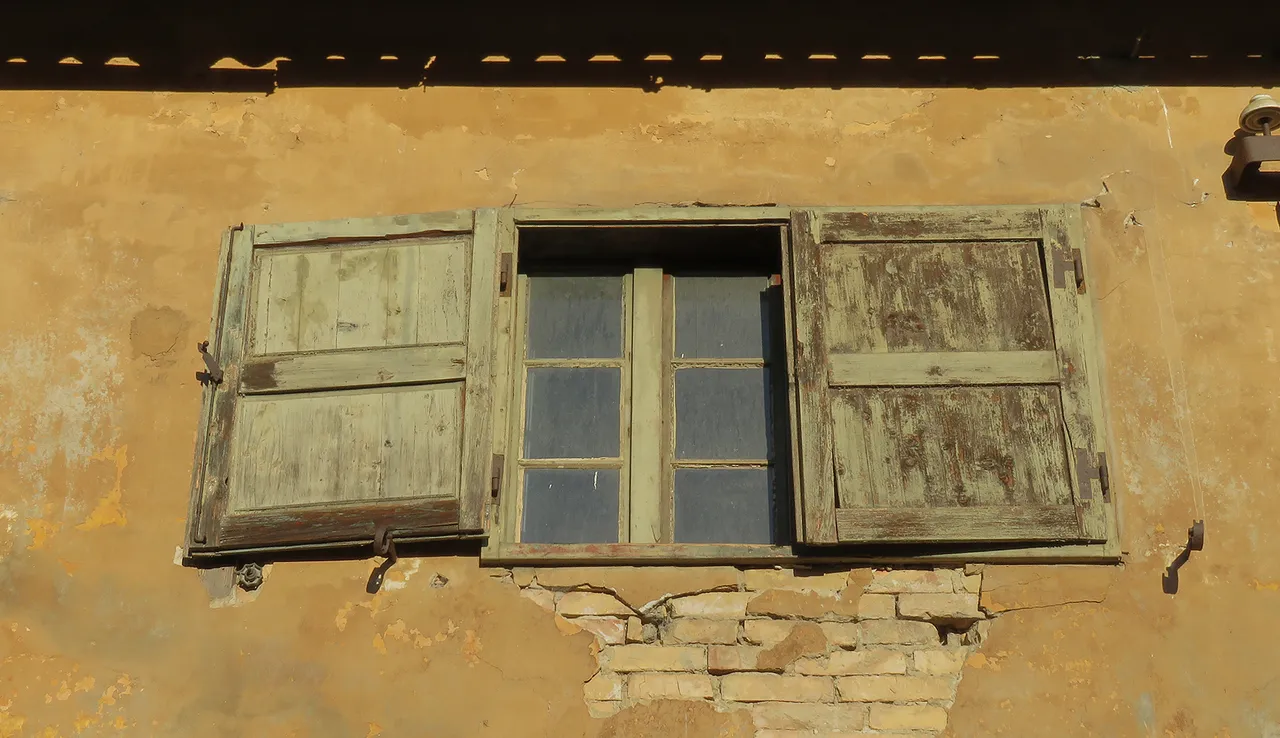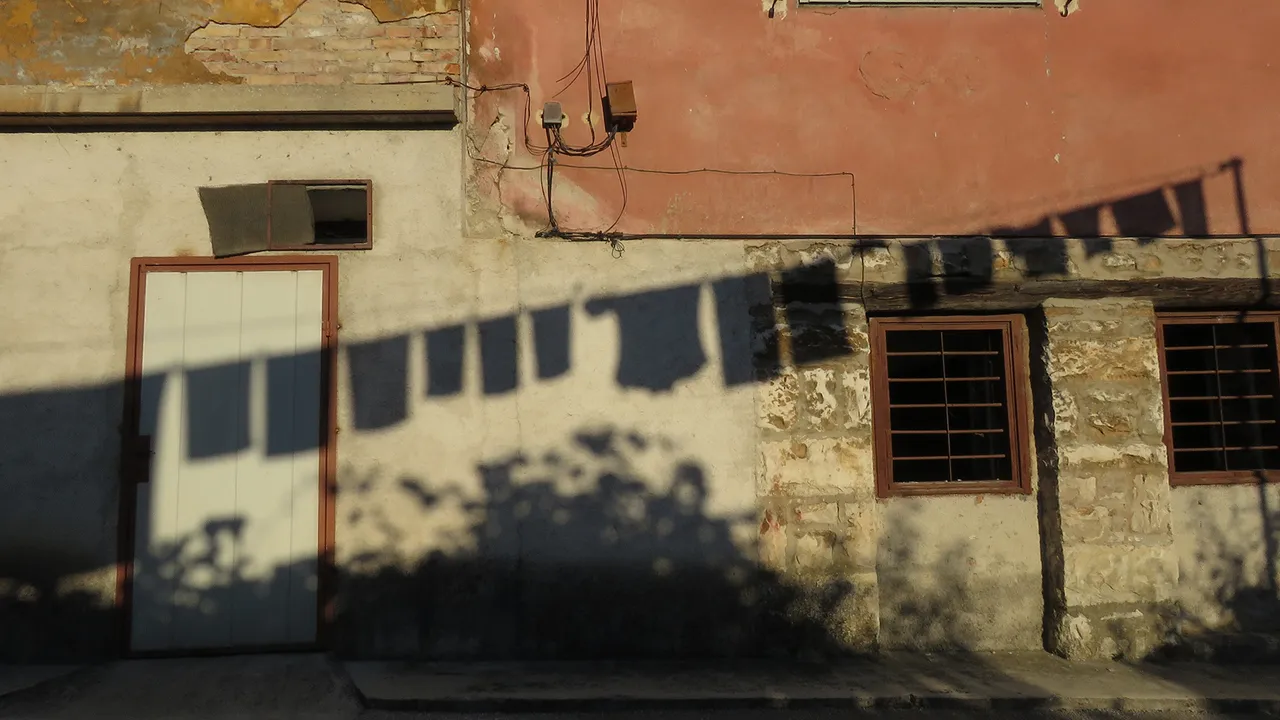Rasha is a unique little town.
There is nothing quite like Rasha in Istra. And that statement is valid for the entire of Croatia as well.
Here you can see the church on the main square. It was built in the period between 1936 and 1937. Just like every other building in Rasha.

The entire town was built from scratch in 547 days, as one of the planned communities of Mussolini's regime.

The work started in April 1936. At the end of that month. Some months later Mussolini visited the large construction site.
In April 1937, most of the buildings were ready to be lived in, so the inhabitants started populating the brand-new mining town.
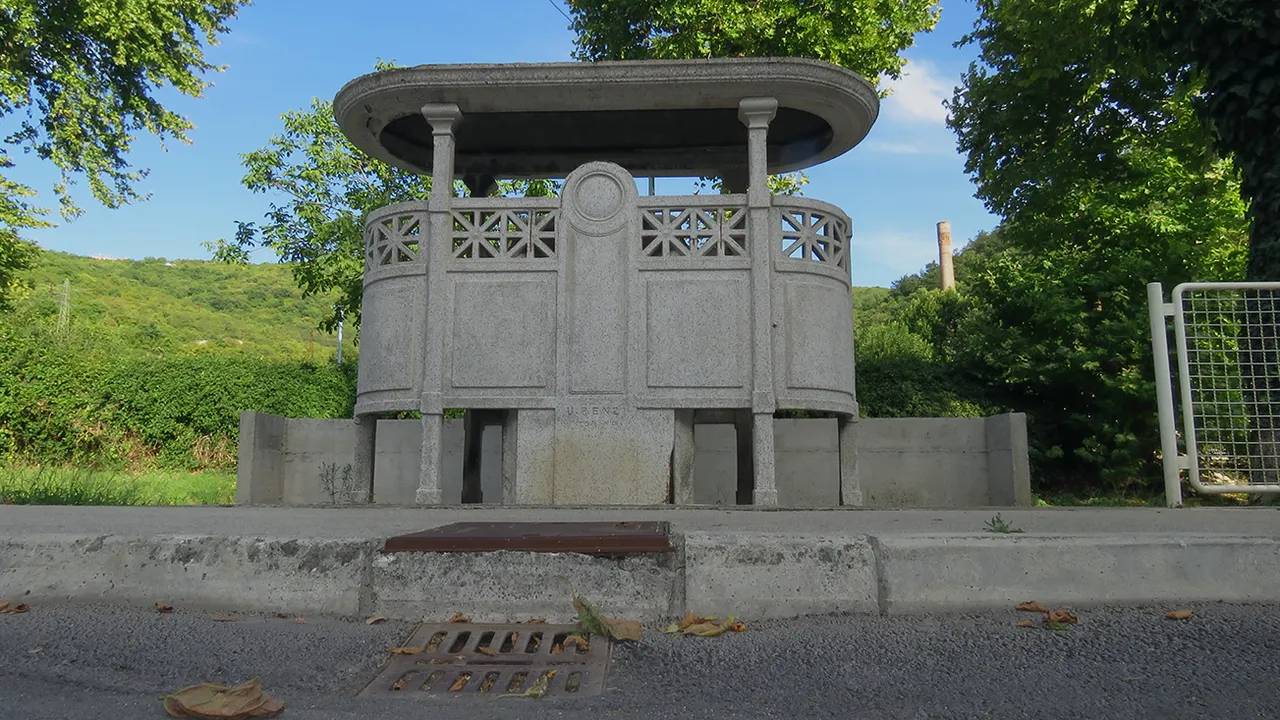
On the 4th of November 1937, Rasha was ceremonially inaugurated in the presence of the king's delegation and fascist officials from Italy.

The leading architect, Gustavo Pulitzer Finali from Trieste, was a Jew. With the Italian fascist regime getting every year closely bound to the German Nazi regime, and the first implementations of the Racial Laws coming in 1938, two years after the Rasha project, in 1939, Gustavo Pulitzer fled to the USA where he designed pavilions of Italian restaurants for the World's Fair in New York, quite a few mansions in Hollywood, and worked as a set designer in some movies. He returned to Italy in 1949.
The town Rasha is situated in the long but narrow valley of the river with the same name - Rasha.

The urban layout reflects the configuration of the terrain. The architecture here kinda flows like a river.
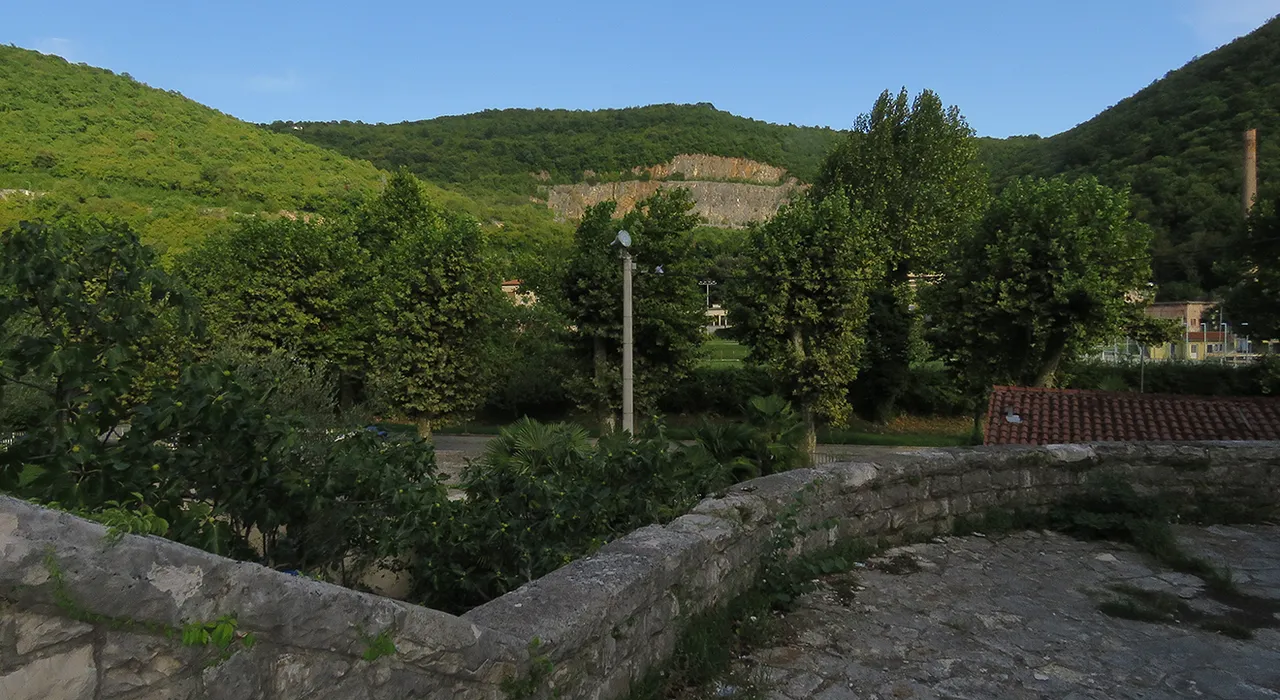
Before the town was created this was a flooded valley. The terrain had to be drained to become suitable for the new settlement. Extensive reclamation works were done in the period from 1929 to 1934.
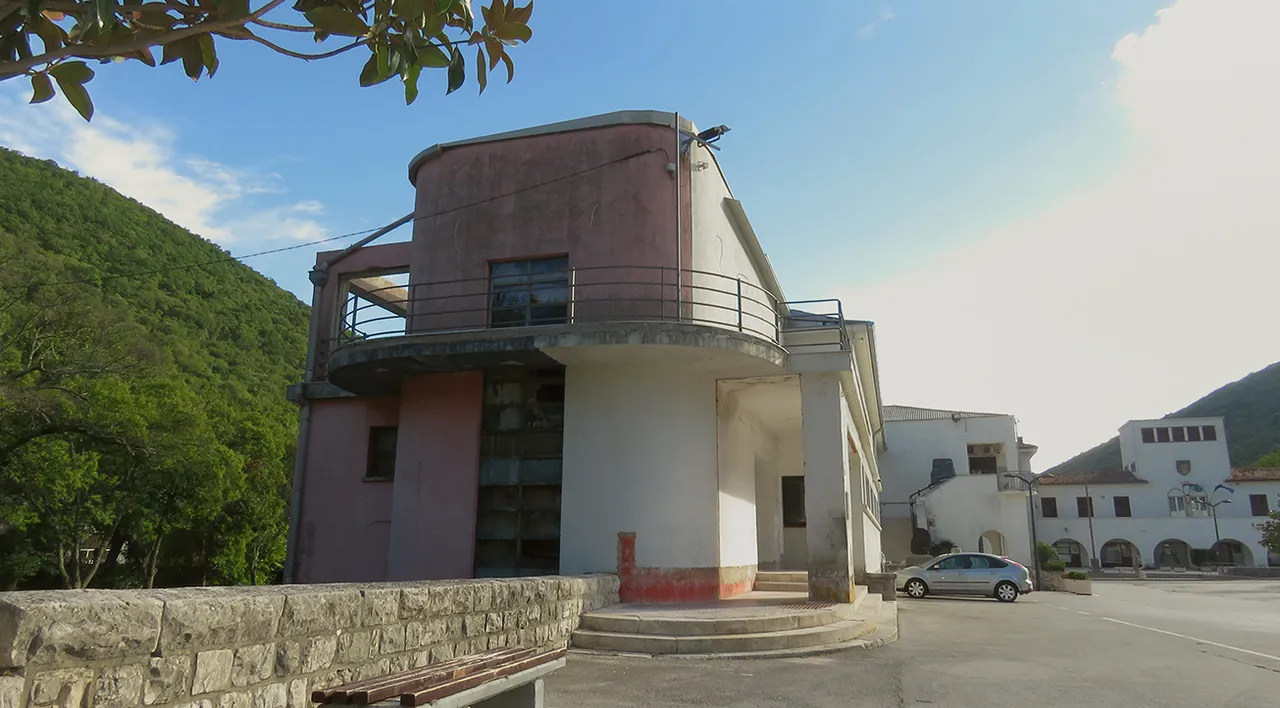
All the planned communities of the Italian fascist regime share a basic style, but they were not completely copy-paste projects. In line with the wider architectural currents in Europe of that period, the fundamental guiding principle was rationalism. That rationalism with its simple strict lines and clean, bright surfaces was then mixed with a certain monumentality in line with the fascist rhetoric and some elements of the traditional architecture of the places in which the settlements were built.
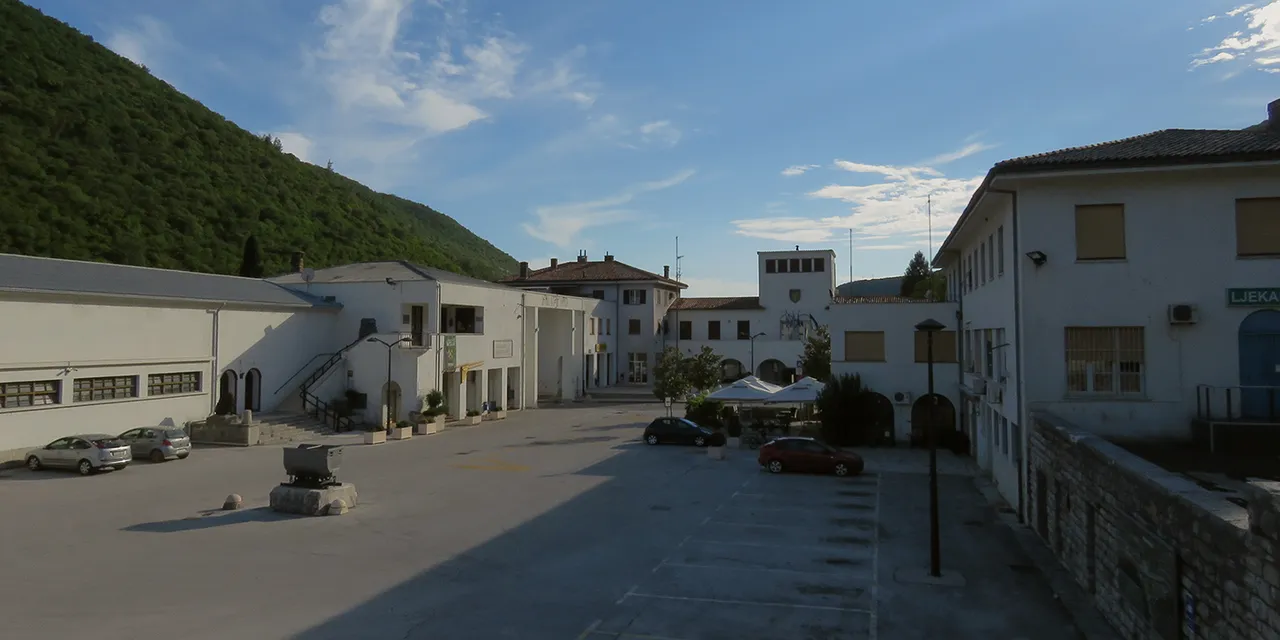
Here in Rasha, Gustavo Pulitzer invented and defined some aspects of that style that will later be used in similar towns in Italy and Lybia.

He didn't only design all the buildings and the urban layout of the town, and I'm aware that the word only sounds weird in this context, but our Gustavo also worked on the design of many interiors and everyday objects like chairs, tables, cabinets, and a coal stove used in the buildings that hosted public institutions and in comfortable homes assigned to the officials of the mining company.
Besides the purpose of allowing the maximum efficiency of the mining operations, the town's design was also meant to reflect the strict hierarchical vision of the regime which supervised its creation.

The church, the school, the other public buildings, and the buildings with apartments for officers and managers are concentrated in the area around the main square.
Behind that part of Raša, which looks like the head of the city that looks a bit like a fish when viewed from above ...
... there is a fairly long body or tail, made of more modest housing for the miners and other working personnel.
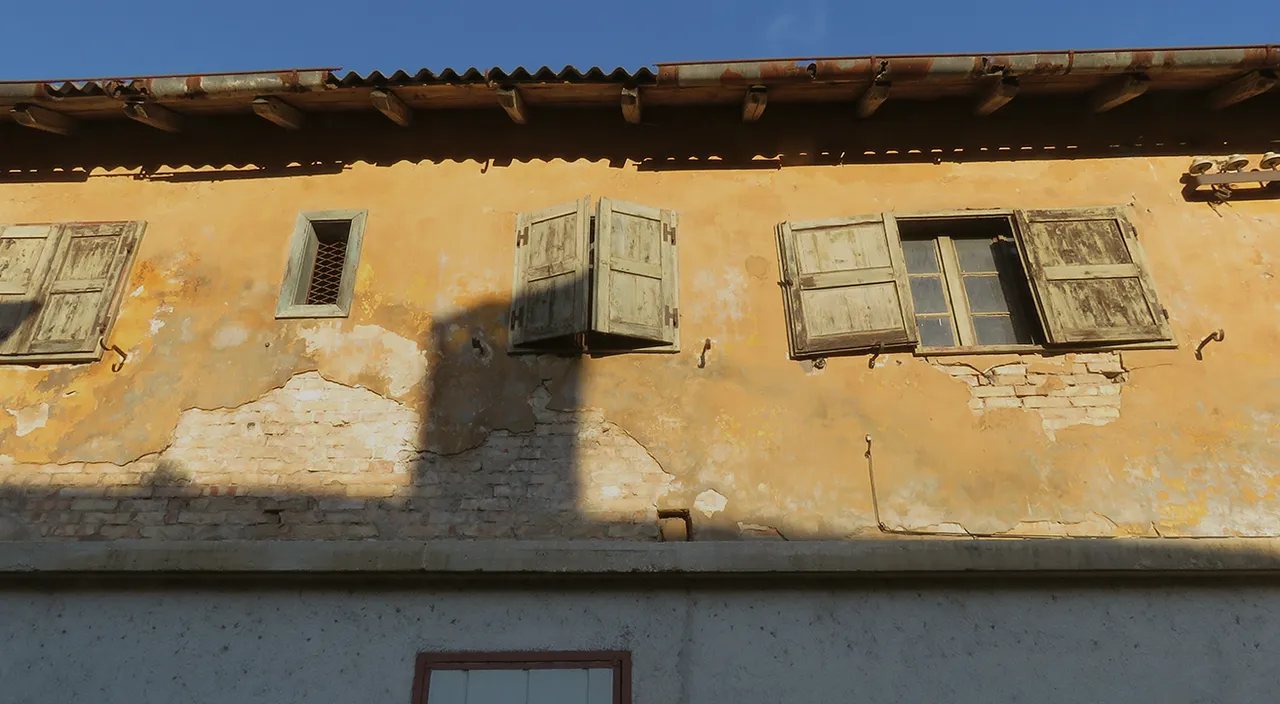
Each of those houses had four two-room apartments ...
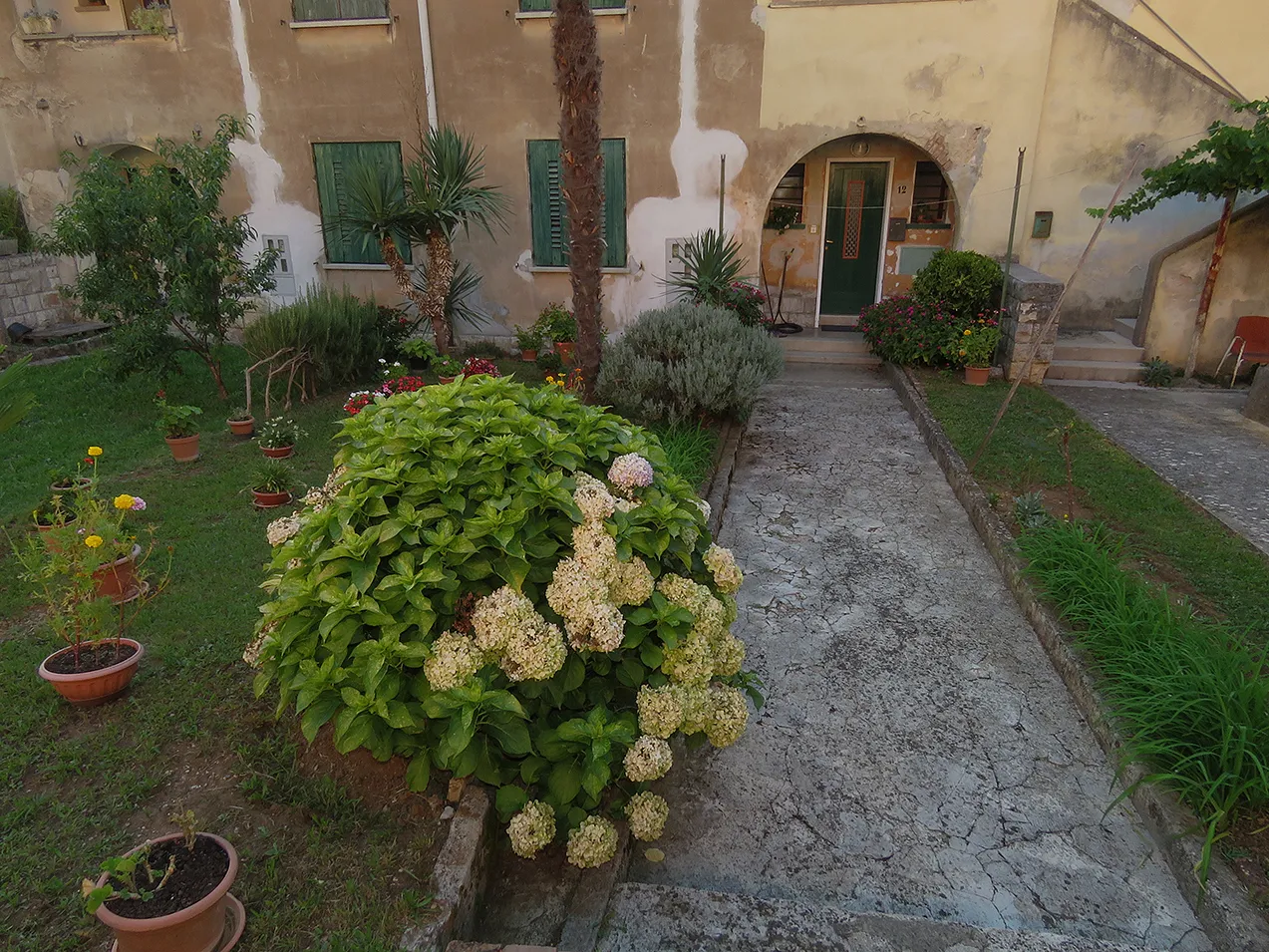
... and a piece of garden. Rasha was designed for a population of two to three thousand.
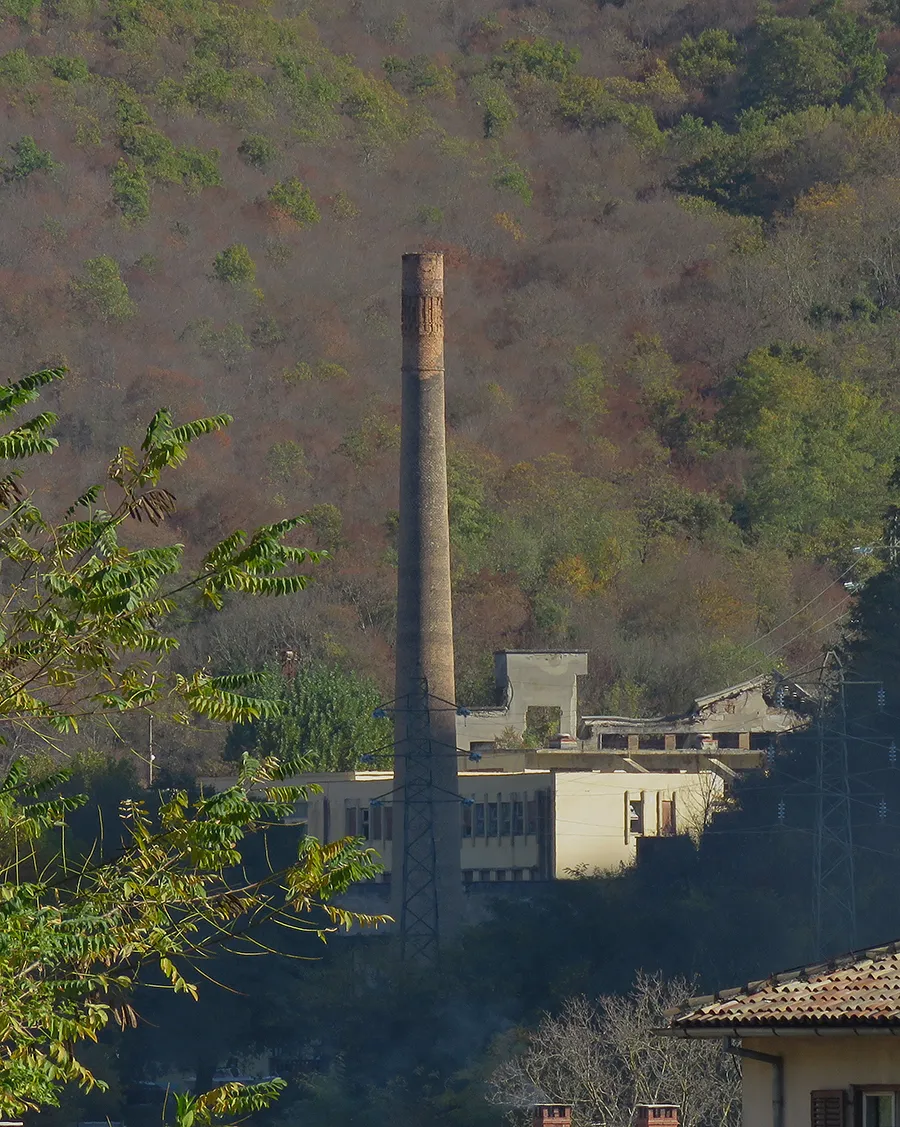
Mining shafts were situated along the edge of town.
The history of coal mining in this area probably started in the 17th century. The first, so far known, concession agreement dates from 1626 when the valley was administrated by the Venetian Republic.

During the 18th century, mining became a continuous activity. About forty miners were producing about 560 tons of coal each year.
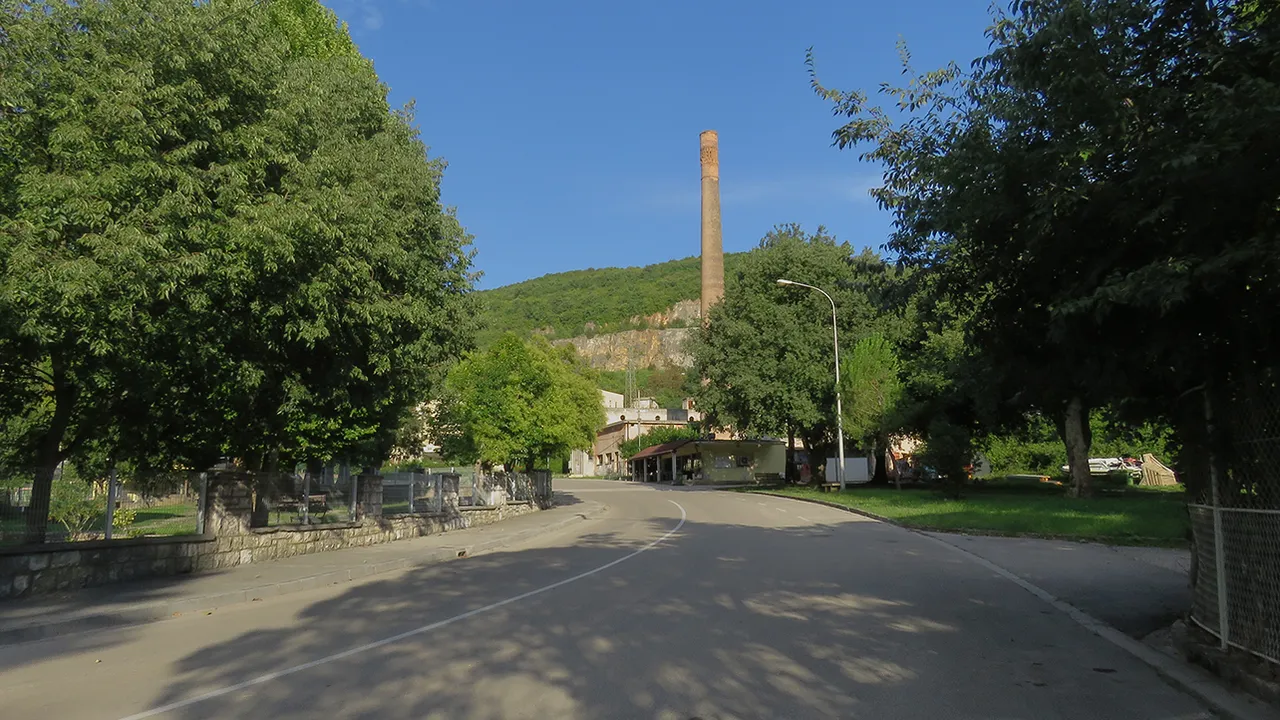
The advancing industrialization based on the widespread use of the steam engine, enabled the significant development of coal mines during the Austrian administration, at the end of the 19th and the beginning of the 20th century. The annual coal production increased to about 90 000 tons. The work was being done by about 1500 employees.

After Worl War I in which the Austro-Hungarian Empire was defeated, Istra became part of Italy.
Because of its autarkic economy and the increasing costs of the mostly unsuccessful colonial efforts in North Africa, Italy in the 20s and 30s was under pressure. There was a great need to increase industrial production.

That's why the mining company Società Anonima Carbonifera Arsa commissioned a new settlement that will be finished in 1937.

In this photograph, I'm approaching a group of industrial buildings on the edge of town.

The glass of the doors and windows was broken in some places and nonexistent in others ...
... so I was able to take a good look through the rusted bars.
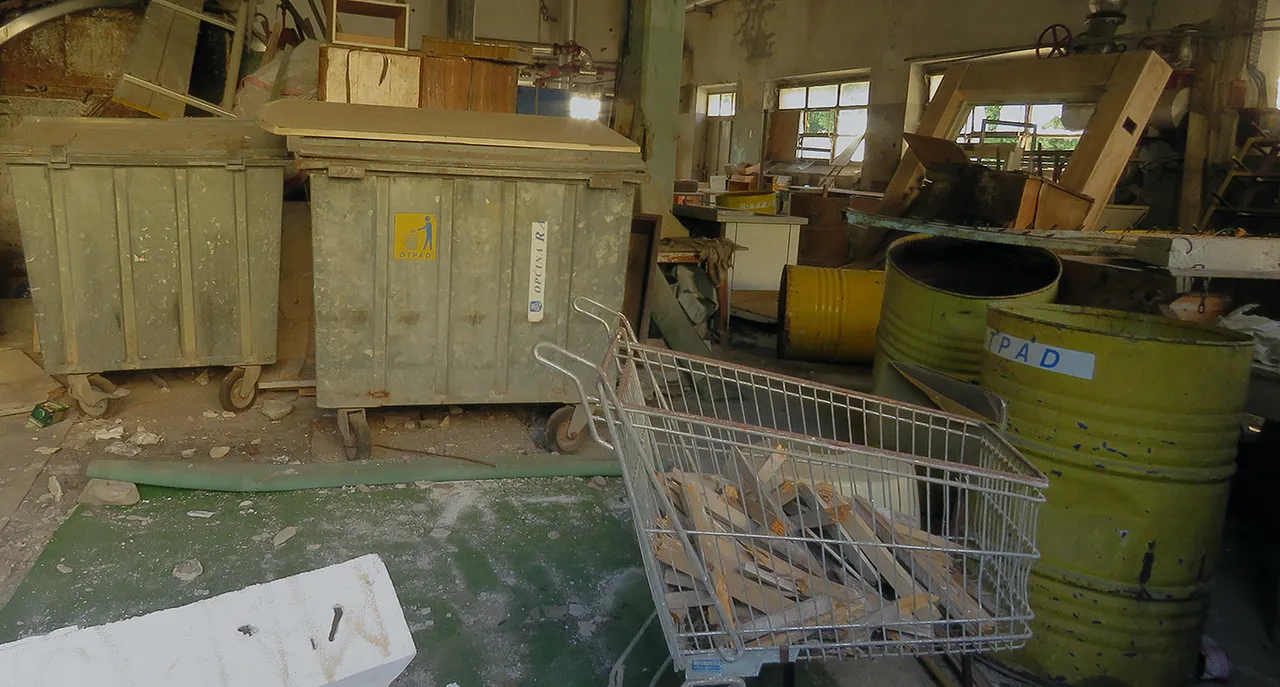
I also took the opportunity to get a couple of photographs that show the chaotic interior.

A wide variety of stuff was stored there.
Since I couldn't enter, I was very constrained when it came to the positions from which I could photograph.

But I did the best I could because that rusty mess was actually quite inspiring.

The overabundance of details in places like this always lures me into exploring the garbage.
The warm light of the late afternoon was great for the atmosphere.

In the narrow space behind the building ...

... I photographed what looked like an entrance of a shaft or something like that. I don't know what was this exactly. But it was a tunnel, that's for sure.

Soon I passed through the gate shown in this photograph ...

... and found an abandoned building well hidden by the lush vegetation.

I climbed the stairs ...
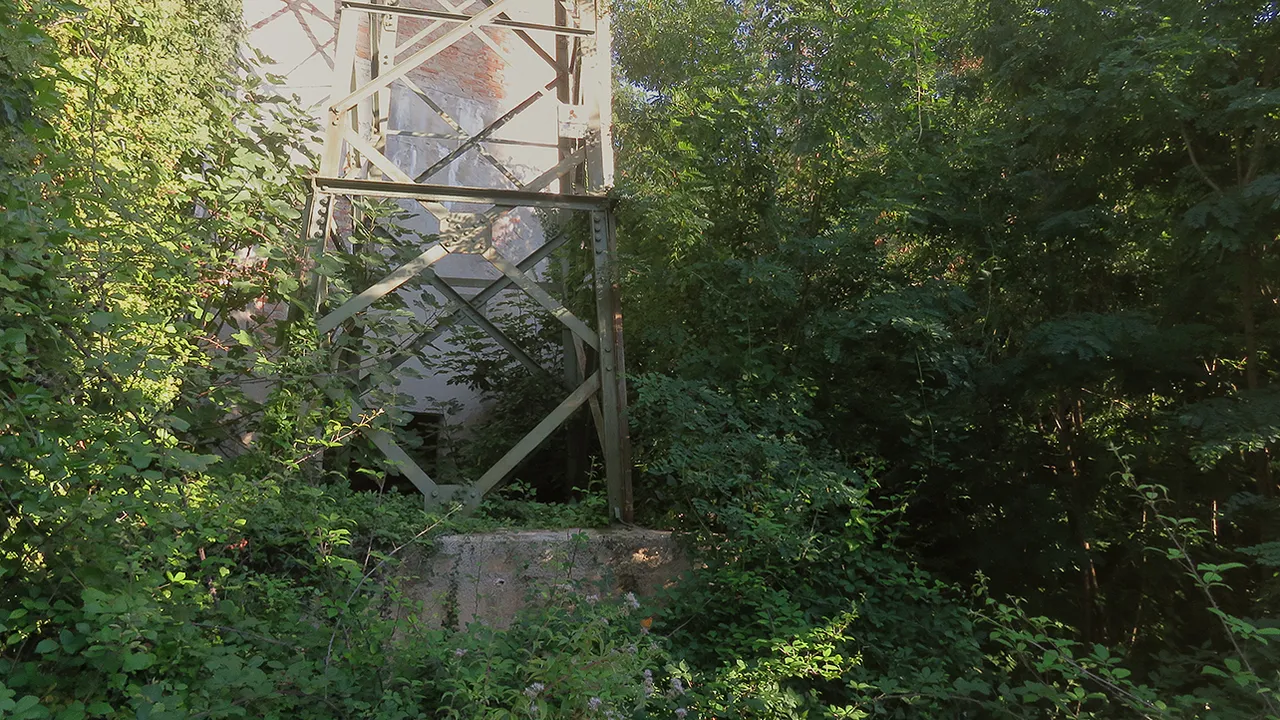
... and reached a nice, slightly elevated place ...
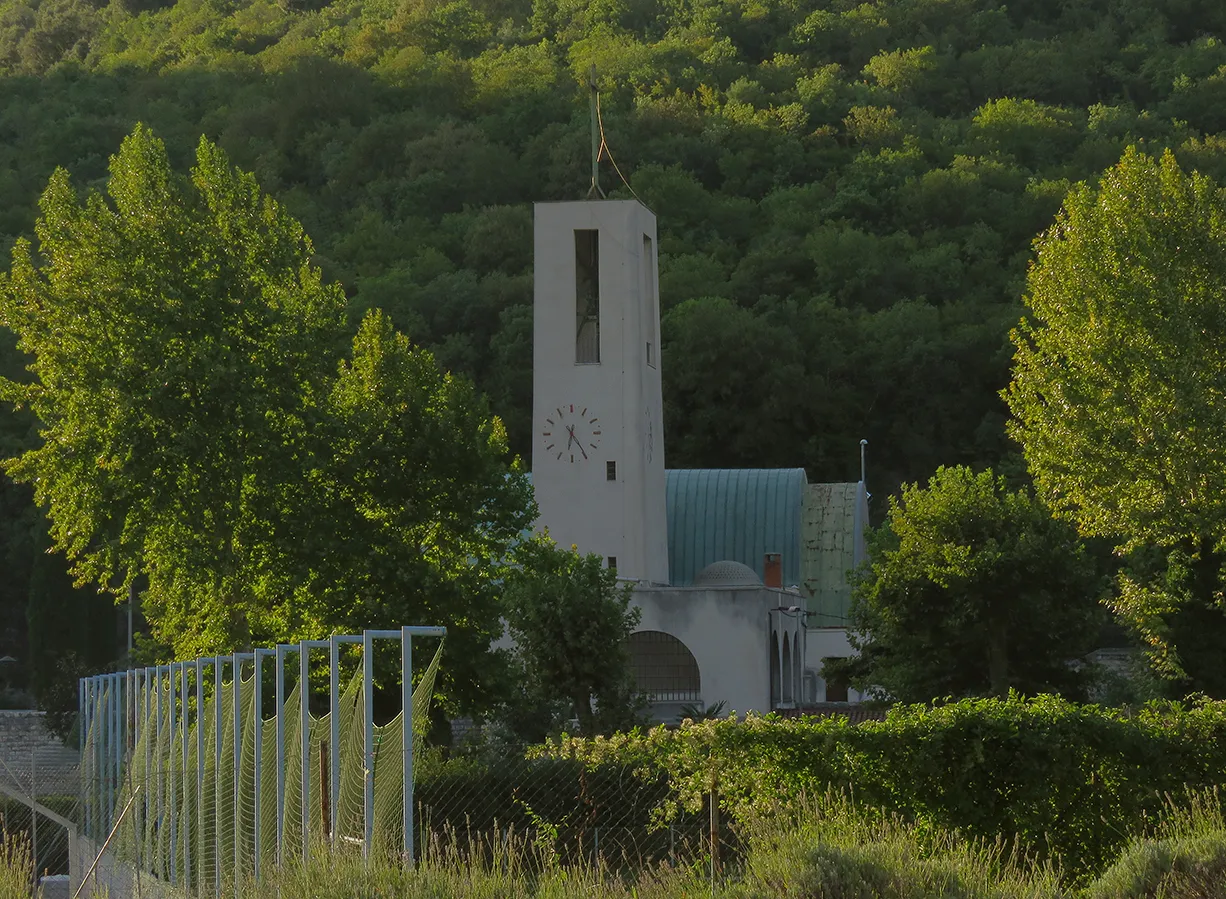
... from which I could photograph the church ...

... and some houses on the other side of the valley ...
... while the butterflies were flying around me.
The name of this species is Argynnis paphia. In the following photograph ...
... I'm leaving that area ...
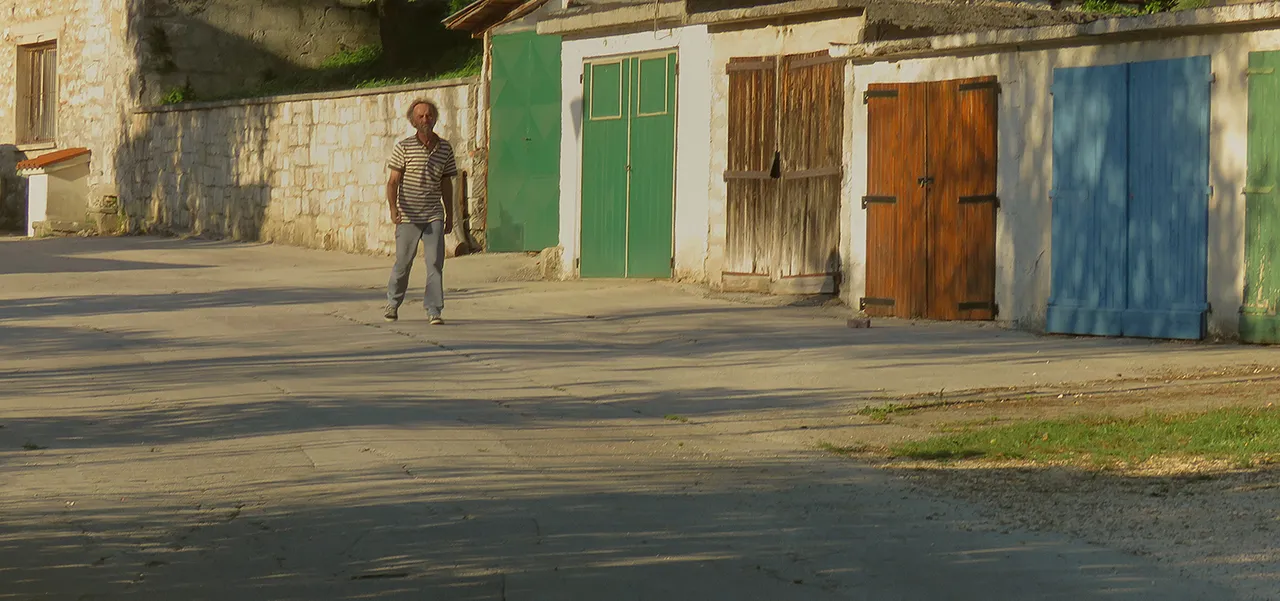
... to continue my walk ...

... in the residential part of Rasha.
Some gardens there are very colorful in summer.

I spent at least five minutes surrounded by a nice variety of flowers.

Every time I visit a small town in Istra, I end up photographing at least one cat.

It happens regularly and I almost consider it obligatory at this point.
I photographed a trio of cats in Rasha, so the post won't be without its obligatory cat interlude.
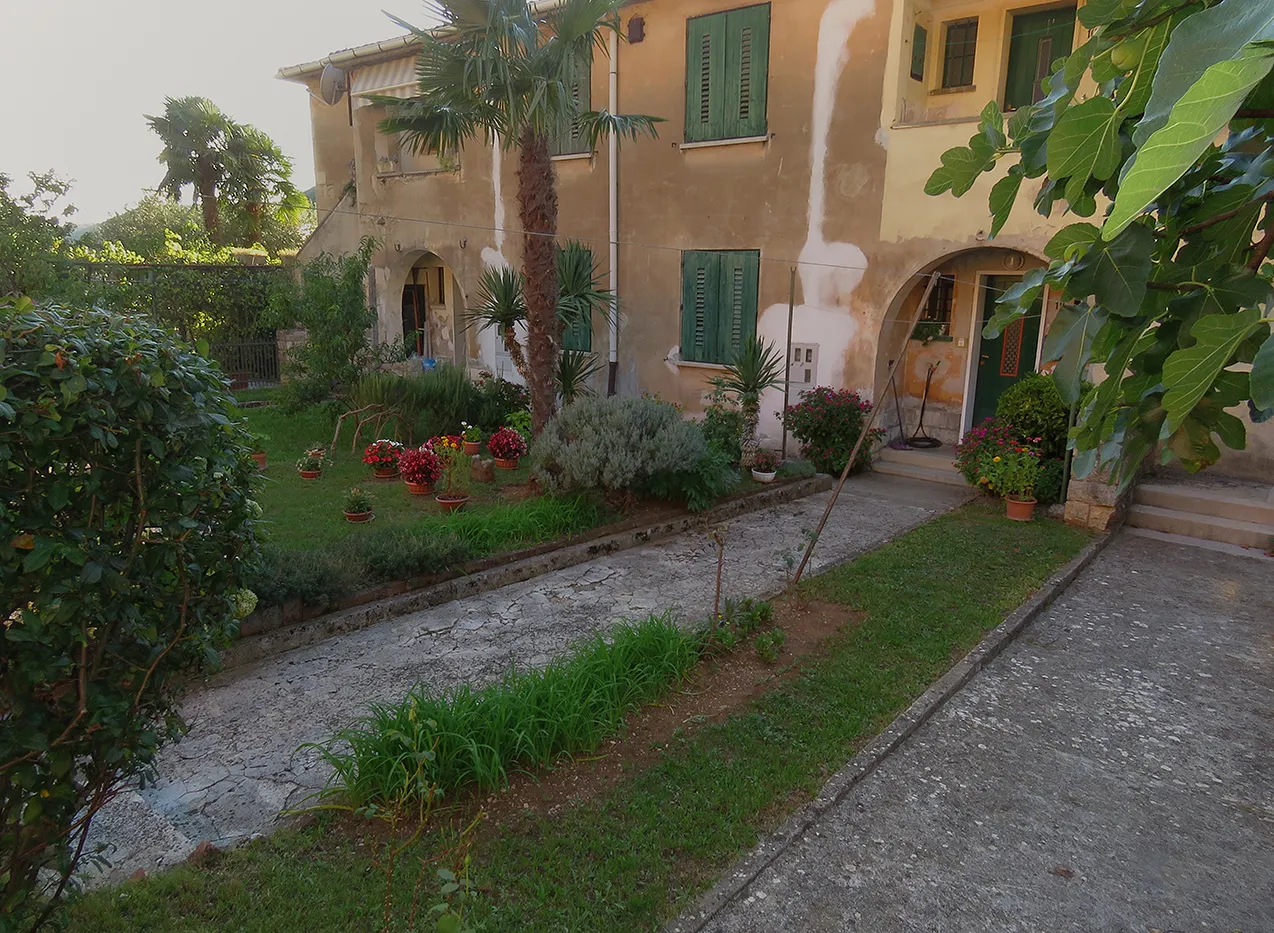
After World War II, Rasha continued being a mining town ...
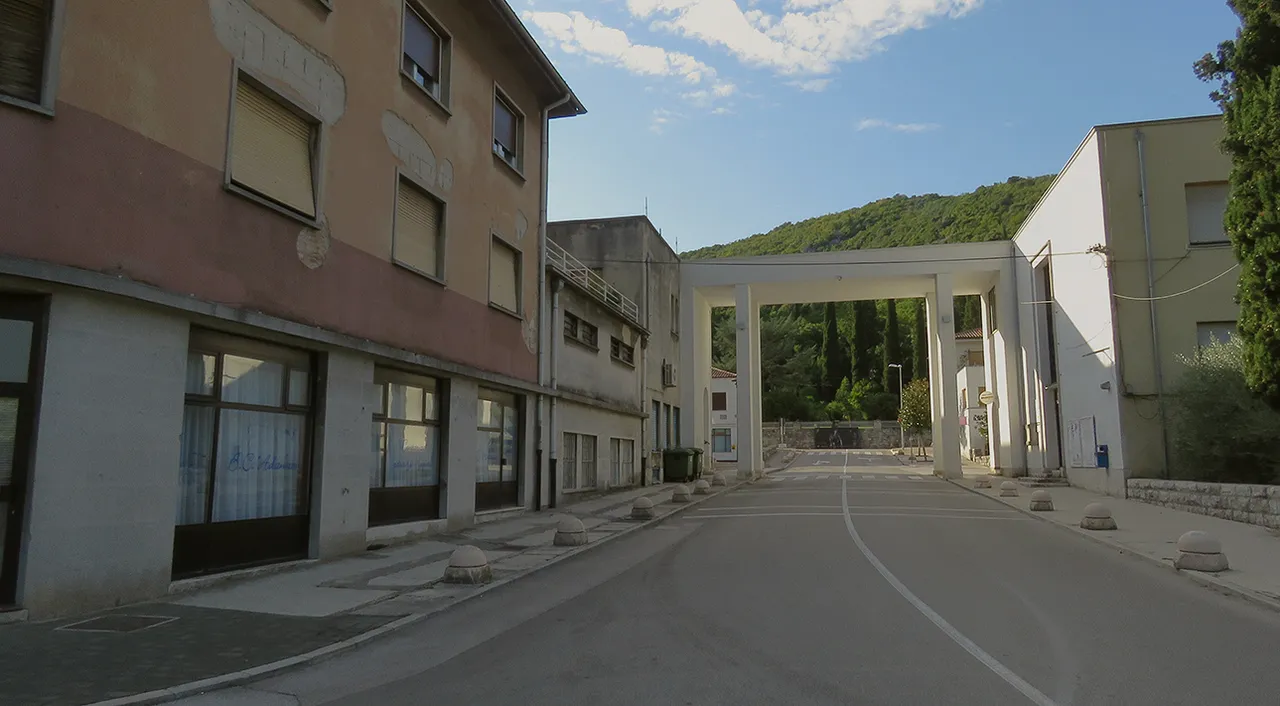
... and its appearance hasn't changed much, despite the big changes in government and the economic system.

For the new communist state of Yugoslavia, the town was a despised relict of Fascism. So it wasn't developed and maintained beyond the necessary minimum. But it wasn't destroyed or left to decay completely either because its solid infrastructure was needed to continue coal production.
That's how this place got kinda stuck in time.
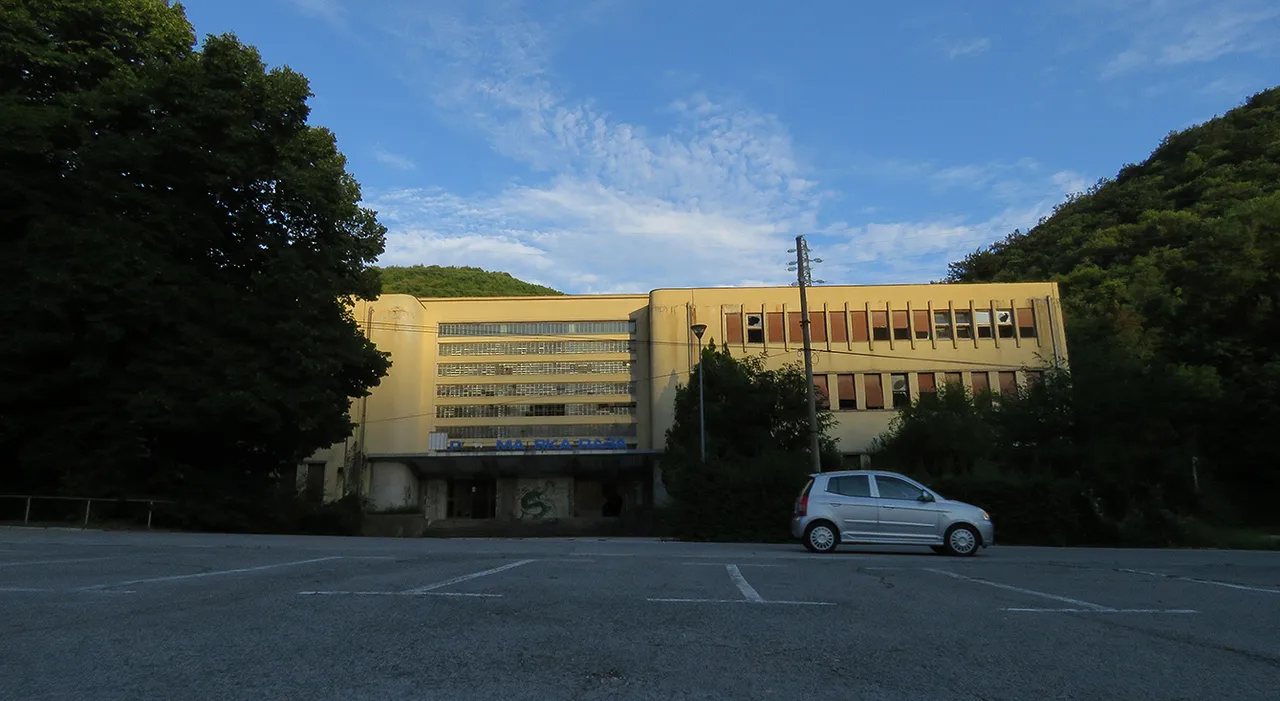
The mines are closed now. The last one in town was shut down in 1966, and the last one in the wider area of the valley stopped working only in 1999. In this photograph, I'm approaching the main building of the mining company.
Here you can take a look at its interior.
In this GIF I animated a couple of shots that can show the place from a different angle.
Here you can see a man passing by the building that hosted the pharmacy on its ground floor until the end of World War II, a grocery store for quite a few decades after that war, and now, there is a wellness center in that place.
I followed him for a minute or two through the lens of my camera ...

... as he walked toward the iconic gate of the town. Sometimes the architecture is best shown in photographs when a human figure is present in the shot too.
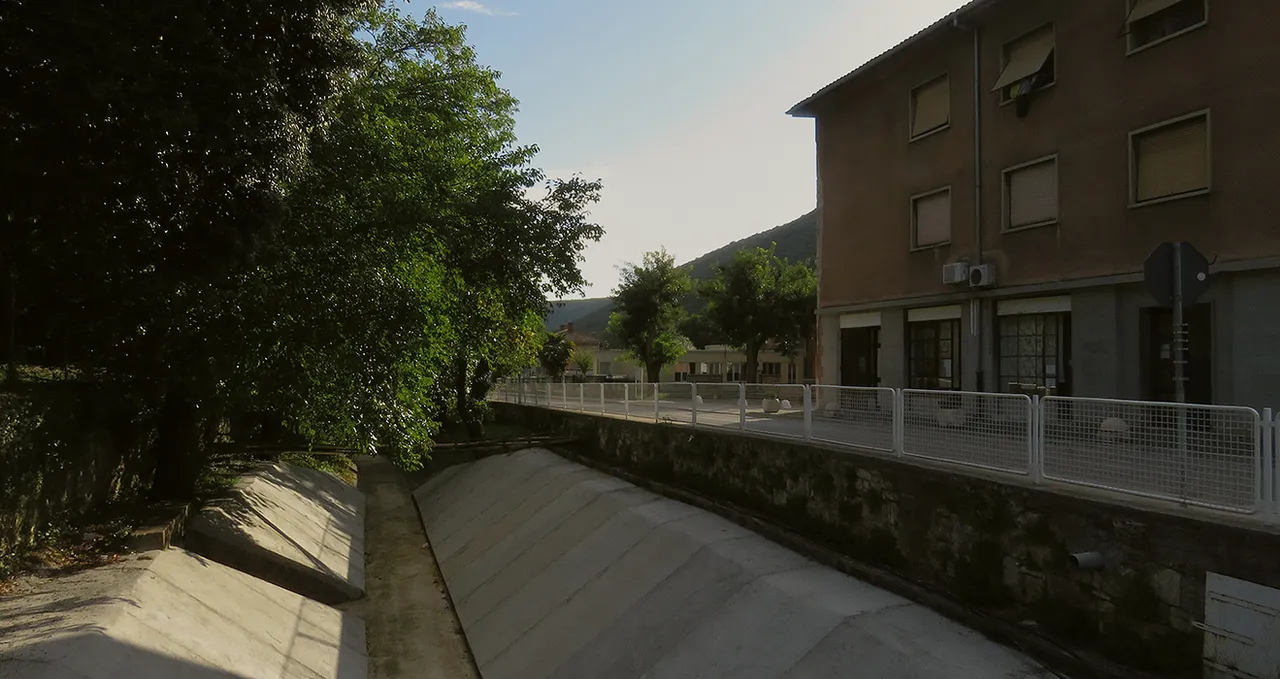
Rasha was built in a narrow valley bordered by hills. It looks like the streets and mines could get easily flooded during heavy rains. Canals like the one shown in this photograph were built in 1936 to prevent that kind of trouble.
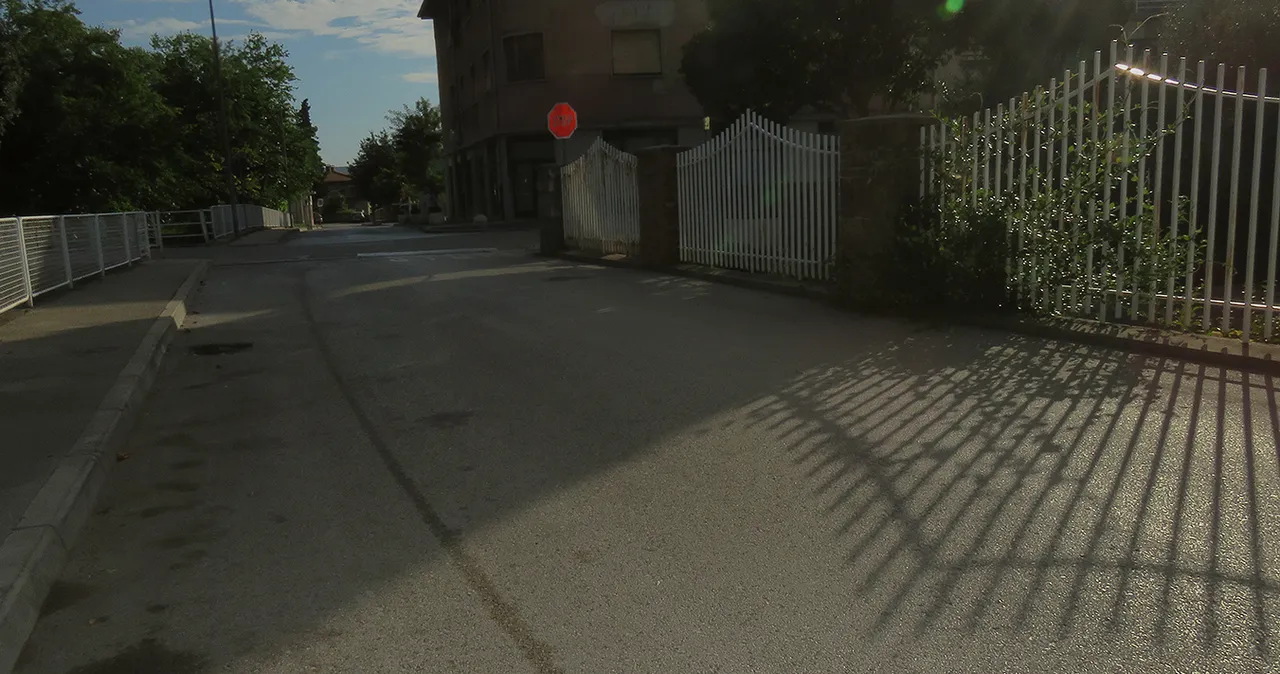
Here you can see the street that borders the canal. In the following photograph ...
... the focus is on the main square. The mine cart in the foreground looks like a sculpture but is actually one of the real ones that were used for the mining in Rasha. From 1937 to 1947 a three meters tall statue representing a powerful but anonymous miner & warrior with fascist insignia, (a fantasy character from a fascist wet dream, in other words) was standing in that central place of the square. The statue was the work of Marcello Mascherini, a sculptor from Trieste. Marcello Mascherini was a great artist so that piece of fascist propaganda didn't look bad at all if we speak purely about the aesthetics. In the background, you can see the Church of St. Barbara. Its shape was inspired by the carts used in the mines. The church is essentially an overturned mine cart. Which is brilliant. Rasha (Raša, if you wanna write it in Croatian) is a very interesting town. A joy to explore.
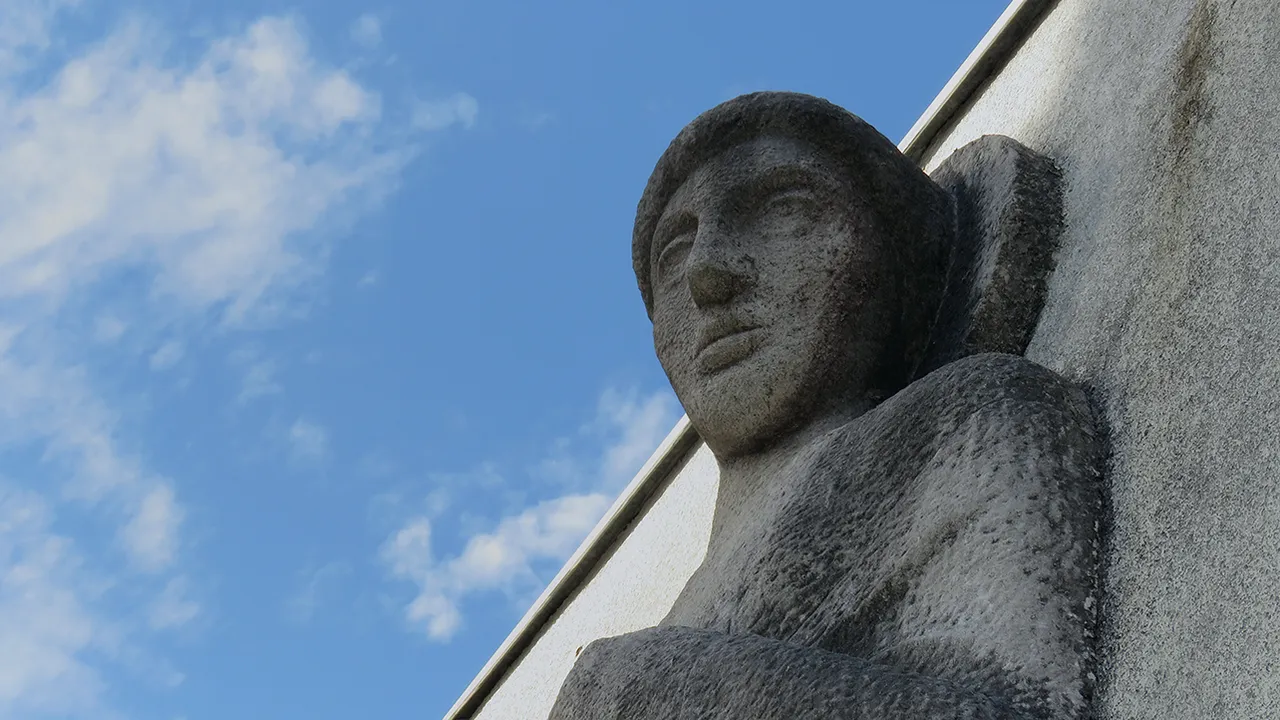
If you ever wondered how a saint called Barbara could look, here you can see one visual interpretation. The statue on the church's front facade, near the entrance, is a work of Uge Carà, another visual artist from Trieste. Carà is an Italian-sounding abbreviation that he used as a half-pseudonym. His real family name was a very Slavic-sounding Carabaich.
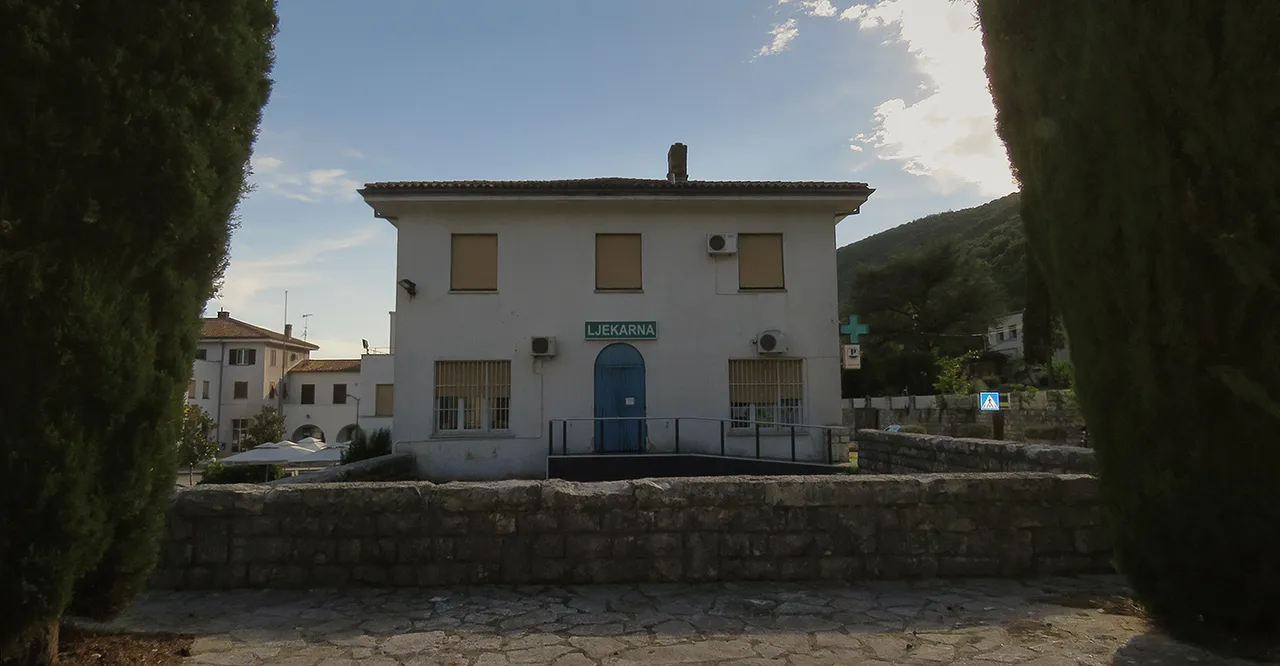
Here you can take a look at the nearby pharmacy. The tall cypresses in front of the church are framing the shot and look a bit like curtains in a theater.

Behind the church, I found more mine carts ...

... and an old water pump.

Here you can take a good look at the clock on the church tower. It's time to move on.

This public pissoir is situated across the square from the church.

It looks like some kind of vehicle. Or a cabin on some kind of vehicle. It also reminds me of something that could be put on the back of an elephant. Or a dinosaur.
Here you can see a line of garages at the footstep of the hill, along the edge of the residential part of town.
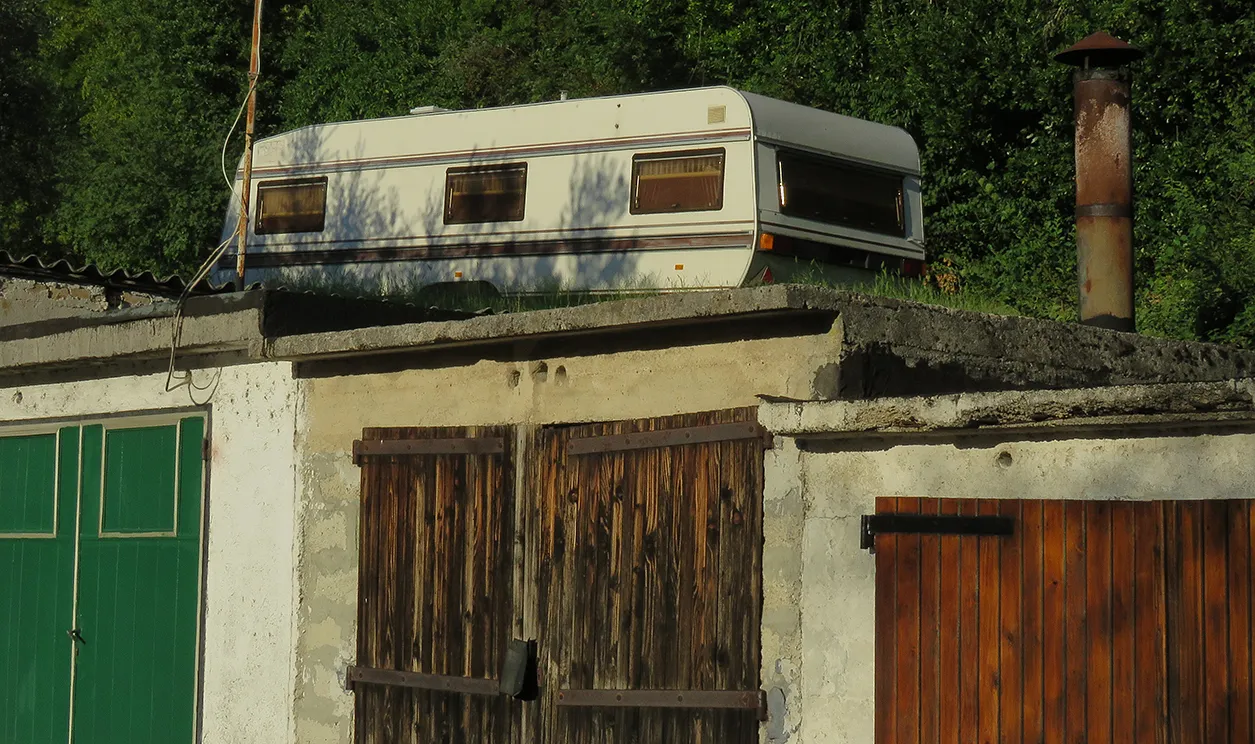
From a distance, it looks like this camping trailer somehow ended up on the roofs of those small garages. But an up-close look reveals that the trailer is actually standing on the ground provided by the hill. In the following photograph ...
... you can see a window on one of the houses a bit further up that road.
Here you can see a shadow cast by the laundry that's hanging in the garden of the house across the street.
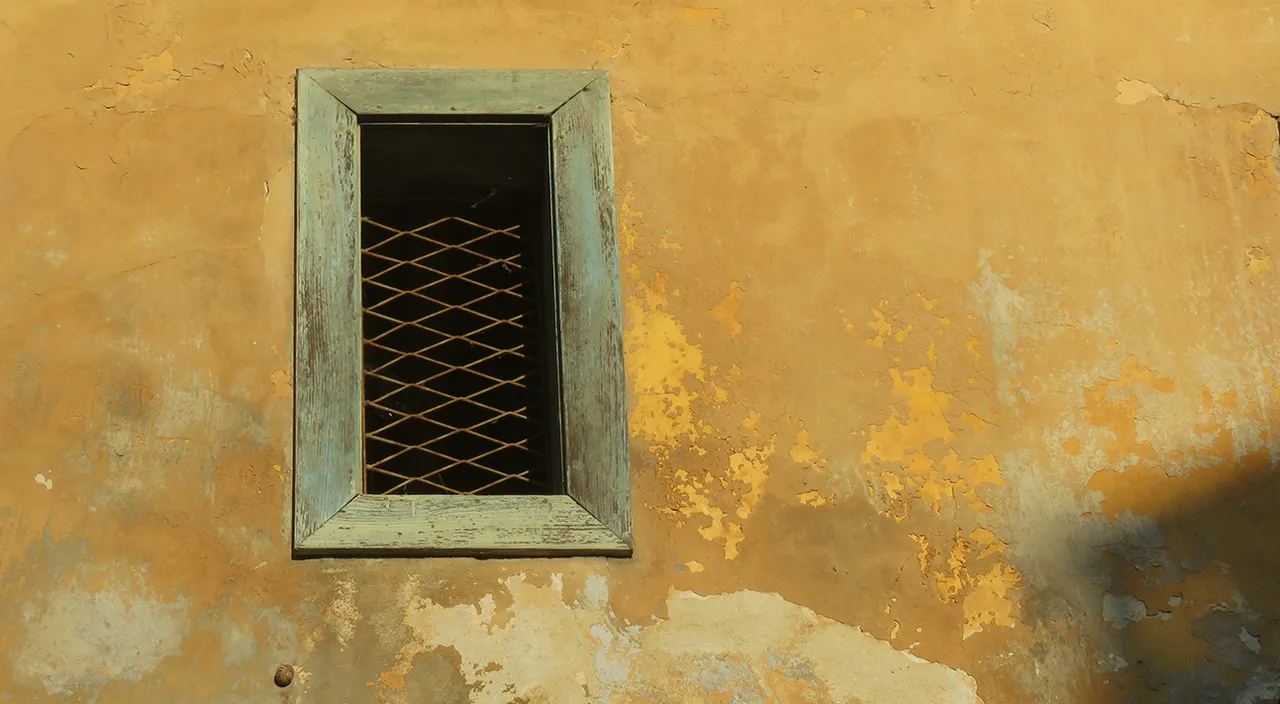
I found a nice variety of windows while walking that street on the edge of town.

AND THAT'S IT. IS TIME TO LEAVE THE MINING TOWN. HOPE YOU ENJOYED THE TOUR. AS ALWAYS HERE ON HIVE, THE PHOTOGRAPHS ARE MY WORK.

